









As advances in technology impact all our lives, new jobs and careers are emerging to keep up with the rapidity of change. At the same time, globalisation and the mass automation of many formerly manual tasks and data collection are encouraging new visions of what it means to be human in a complex, extraordinary world where artificial intelligence and biotechnology are leaping ahead. Nowhere are these changes more important than in securing the safety of our nation. Defence is leading the way in embracing new technologies and new ways of doing business. Our STEM professionals work at the leading edge of technical innovation, ensuring our Navy, Army and Air Force personnel are equipped with the best technologies, knowledge and know-how. We do STEM for a purpose. In Defence, we recognise that STEM is more than just a collection of subjects; it’s a way of thinking — asking questions, considering data and evidence and being curious. It’s also about striving for a deep understanding of the problems — and being creative. These are the skills we need to address the most pressing Defence and security
challenges. Defence is intent on growing a STEM workforce that draws on the best and brightest from across Australian society, ensuring a diversity of background, thought and perspectives, which is so important for true discovery and innovation. I commend to you this latest edition of CareerswithSTEM: Defence . In it you will find real-world career profiles that are bound to inspire, as well as practical tips and advice from Defence personnel in a range of exciting fields.
Yours in STEM, Professor
Tanya Monro AC Science, technology, engineering and mathematics are the keys to tomorrow’s world
STEM is more than just a collection of subjects; it’s a way of thinking"
Tanyaprofessor,Monro Chief Defence Scientist
Bachelor of science(honours)
phd
chief defence scientist
Science, technology, engineering and mathematics are the keys to tomorrow’s world
STEM is more than just a collection of subjects; it’s a way of thinking"
Tanyaprofessor,Monro Chief Defence Scientist
Bachelor of science(honours)
phd
chief defence scientist

To help you find your dream career in Defence, try our secret formula. We call it Defence + X, where X equals your interest, another field or a life-changing goal. Think Defence + cyber security = cyber warfare operator; Defence + robots = army mechatronic and electrical engineer; or Defence + space = satellite engineer. And at the core of these careers? Some serious STEM skills, of course!
We’ve divided this issue of Careers with STEM: Defence into seven X areas for you to explore. Here, you’ll find dream roles, salary details and the stories of people working in the Navy, Army, Air Force and Defence Science and Technology Group (DSTG). Find out how to get started, the study or training you’ll need, and what jobs are in demand.
Space is critical for Defence communications, combat effectiveness and situational awareness. Work with satellites or in systems engineering, air surveillance, research and more.

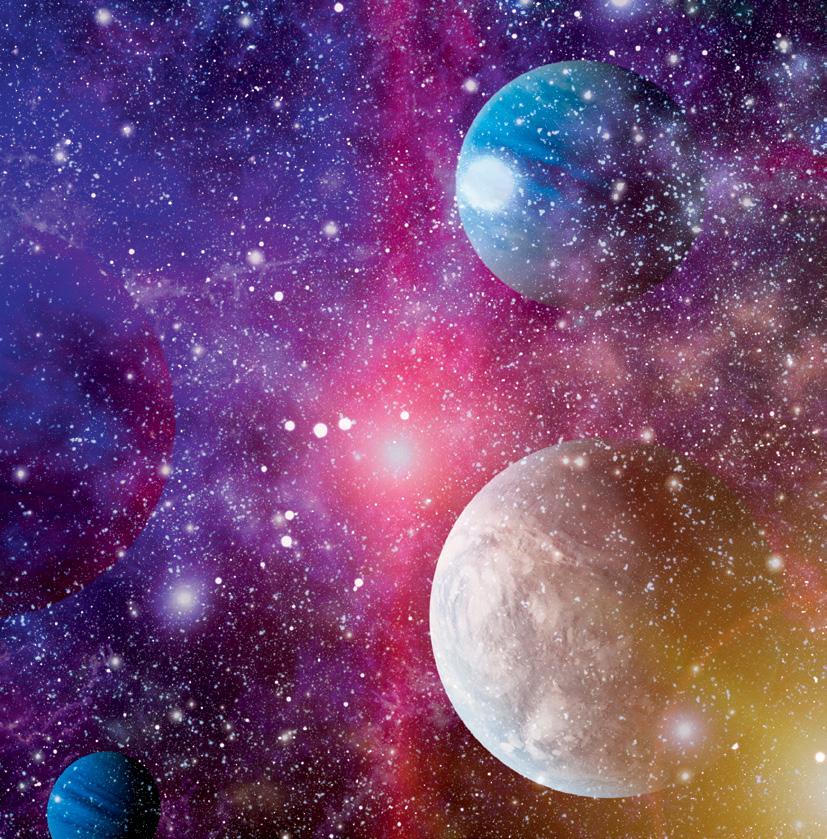
Use nutrition science know-how to optimise the health of military personnel or ensure food security by defending Australia’s shipping and trade routes.

Jump into Defence through trades and apprenticeships, or directly after Year 10 through general entry pathways. You could work in everything from mechanics and electronics to IT!
Cyberspace is the new frontline for Defence, with career opportunities in everything from network protection to researching cyber attack techniques.

Be at the frontline of quantum research, uncover new materials and be part of some epic projects – like using diamonds to track submarines!
Get into naval shipbuilding, keeping propulsion and information systems in tiptop condition and working with cutting-edge technology.


Design, build and manage robotics and Artificial Intelligence (AI) systems. You could help create autonomous defence systems and make aircraft smarter!

STEM jobs in Defence offer an amazing variety of exciting opportunities for you to make a difference to the world
Defence includes a huge range of jobs in the Australian Public Service, as well as in the Australian Defence Force, made up of Navy, Army and Air Force. You’ll get to work on really important projects and learn a lot of new things, plus build teamwork, leadership and problem-solving skills that will be useful in any job you do.
And there are unique jobs you can do working in STEM and Defence that you won’t find anywhere else!
1 4 7
Want to work with really cool underwater technology? Marine technicians are in charge of making sure the mechanical and electrical systems on submarines are working properly. You’ll get to use your technical skills and problemsolving abilities to keep everything running smoothly.
As a doctor, you’ll provide medical care to military personnel. This career involves working in a potentially highstress environment, on a ship or in a field hospital, and requires a deep understanding of medical procedures and protocols. Defence doctors need to work effectively under pressure and adapt to changing conditions.
DSTG also comprises a range of specialist Defence scientists. For example, a data analyst might be hired to study data from various sources in order to improve the performance and effectiveness of existing Defence systems.
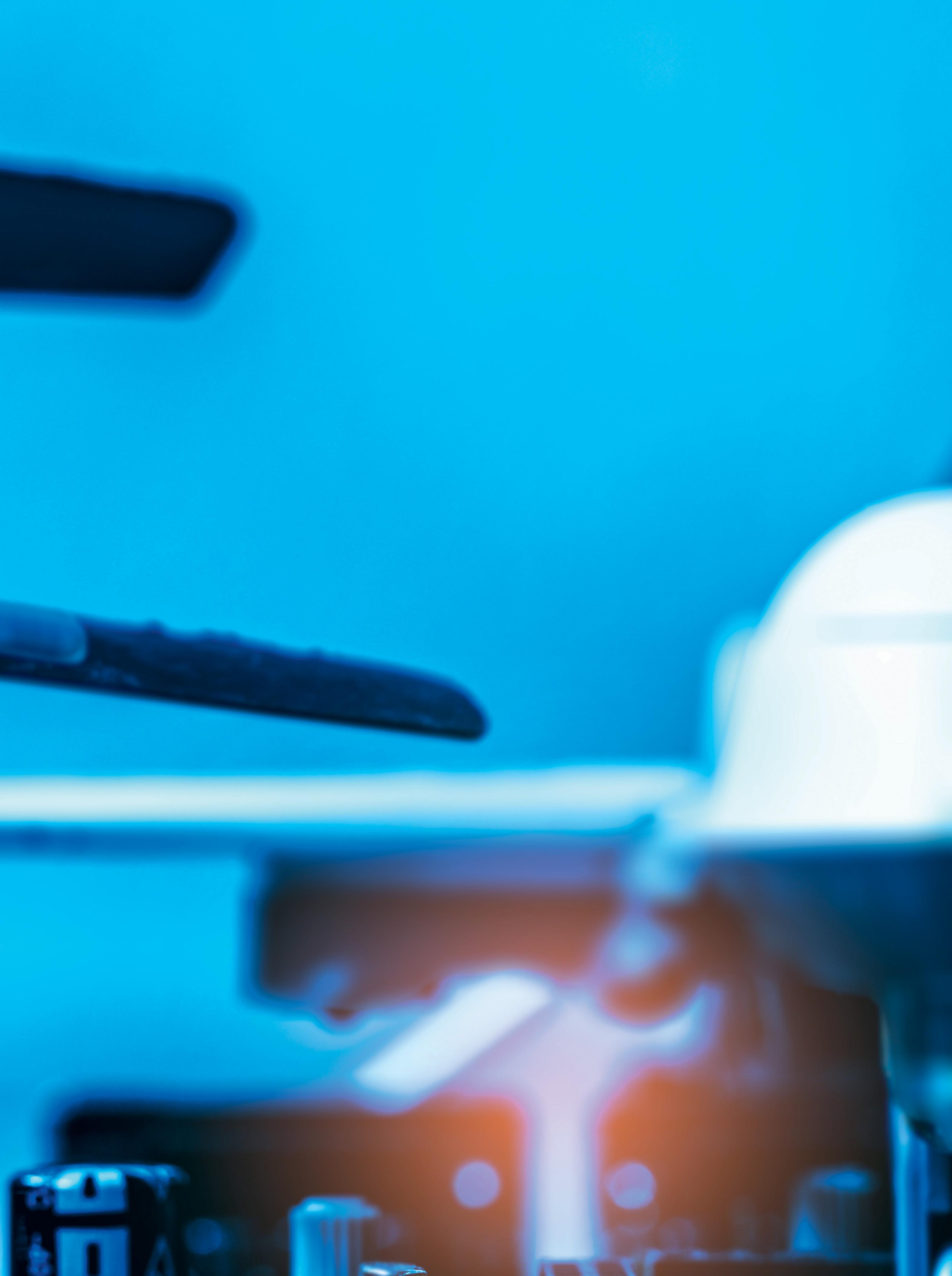
A weapon technician maintains and repairs weapons systems on all kinds of Defence equipment. You’ll be working with complex and potentially dangerous equipment, so you’ll need a good understanding of mechanical and electrical systems – but thinking on your feet, creativity and problem-solving skills are also super important!
If you love engineering and aircraft, this is the job for you! Air Force engineers are in charge of designing, building, and maintaining aircraft and related systems. You’ll be working with complex and specialised equipment, and require a lot of knowledge about engineering principles and technologies.
Defence employs engineers to design and build robots and other autonomous systems that can be used to detect and remove mines from waterways and other areas. This helps keep military personnel out of harm’s way.
3 6 9
Defence employs health, nutrition and sports professionals to help military personnel stay healthy and in good shape. This requires a strong understanding of fitness, nutrition and health for their specific situation. You may work in a variety of settings, including gyms, training centres and hospitals.
Engineers at Defence Science and Technology Group (DSTG) are responsible for researching and developing technologies and systems for use across Defence. For example, a microfabrication engineer designs and builds tiny devices such as sensors. This career requires knowledge of engineering principles and advanced manufacturing.
2 5 8 5 DEFENCE
What
12
through VET can set you up for a career in Defence. Here’s how!
Hands up who’s sat in class wondering when you’ll ever use trigonometry or apply Newton’s Laws of Motion in the future? This page is for you. Think of the following electives as the very first steps on your STEM + Defence study and career path. These subjects can kickstart your knowledge in essential areas
B A
Complete a Certificate III in Carpentry, then complete military and employment training with Defence
Air Force Carpenter
Take the recruit course, then complete the combat engineer course at the School of Military Engineering and the trade training plumber course at the Army School of Electrical and Mechanical Engineering
c
needed for some very cool and unexpected jobs in Defence, and we’ve filled them in with some potential study paths. You’re welcome!
Study a Bachelor of Mathematics or Data Analytics


Data Analyst at DSTG Army plumber
A DRONE
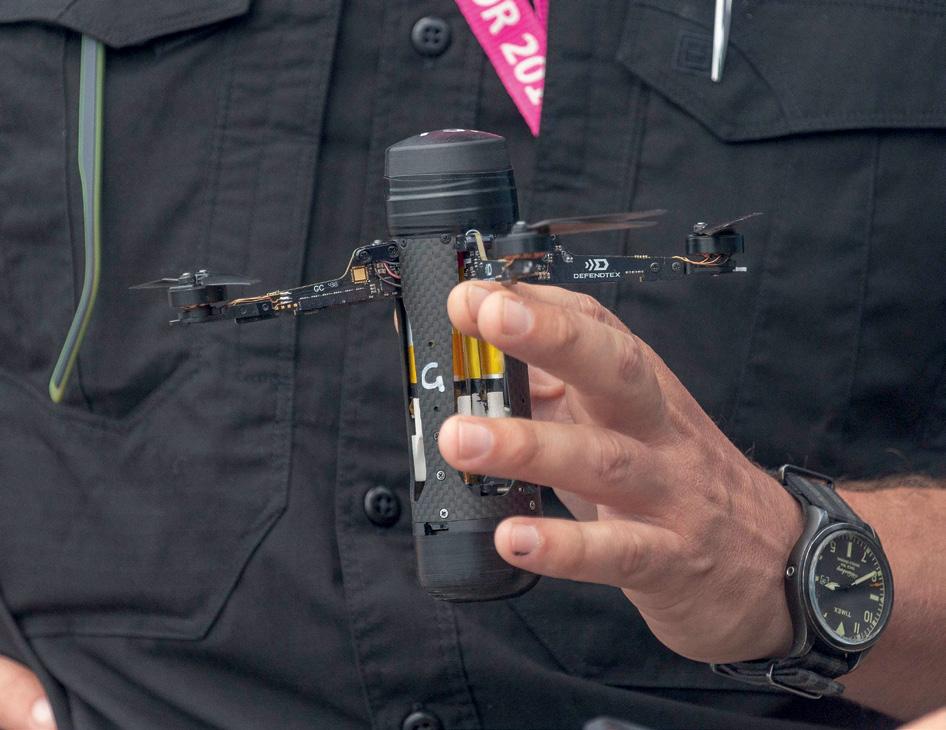
EXERCISE AUTONOMOUS WARRIOR, WHICH TESTS AUTONOMOUS SYSTEMS AND TECHNOLOGIES
b a
Study a Bachelor of Science, majoring in physics and go on to Honours, Masters or a PhD.
Study a Bachelor of Engineering (Honours) (Aerospace Engineering), then complete military and employment training with Defence
Take ELECTROTECHNOLOGY as a VET subject
Quantum Technologies Researcher at DSTG a b b c a
Navy Aerospace Engineer
Complete a Certificate III in Electrotechnology, then complete military and employment training with Defence
Air Force
Electrician
Study a Bachelor of Engineering, majoring in electrical/electronics, then complete military and employment training with Defence
Navy Aircraft Electronics Engineer
Study a Bachelor of Engineering (Civil) or (Structural) then complete military and employment training with Defence
Study a Bachelor of Engineering (Honours) (Aerospace Engineering), then complete military and employment training with Defence
Study a Bachelor of Space Science
Air Force Airfield Engineer Army Aeronautical Engineer Satellite Engineer at DSTG
Study SOFTWARE DESIGN AND DEVELOPMENT
Study a Bachelor of Cyber Security
Cyber Security Specialist Software Engineer at Australian GeospatialIntelligence Organisation (ago)

Study a Bachelor of Science (Environmental Health), then complete military and employment training with Defence

Study a Bachelor of Computer Science alongside the AGO STEM Cadetship Program
a
Study a Bachelor of Science (Nutrition Science)
Nutritionist -Dietitian at DSTG
a b b c b b
Complete military training, then take the following courses through Defence:
• Basic Seamanship Course
• Combined Jet RHIB Coxswain/ 4.7m Leg RHIB Course
• Basic Hydrographic Systems Operator Course
Air Force
Environmental Health Manager
Navy Hydrographic Surveyor
Complete a Diploma of Food Science and Technology
Complete military training, the Initial Cook’s Course, plus submariner courses with Defence

Food Technologist at DSTG Navy Chef Submariner
Study a Bachelor of Information and Communications Technology while completing the ASD Cadetship Program
ICT specialist for the australian signals directorate
Study a Certificate IV in Surveying and Spatial Information Services while completing the AGO Trainee Program
Trainee APS (Technical) Level 3 with AGO
LSIS SITTICHAI SAKONPOONPOL CPL TRISTAN KENNEDY 7 DEFENCE
MARITIME LOGISTIC CHEF, ABLE SEAMAN BENJAMIN COOKS IN THE GALLEY ABOARD HMAS PERTH DURING EXERCISE LA PEROUSE IN 2023.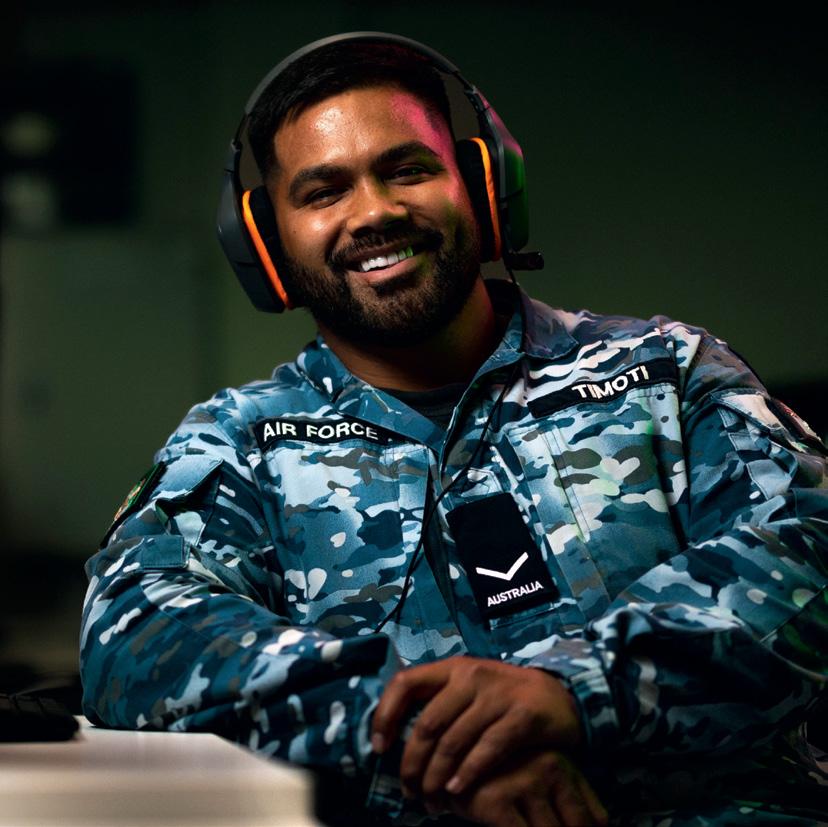

Defence needs to solve big problems like global security challenges.
“This requires the full scope of talent and potential,” says Chris Matterson, DSTG’s Assistant Director Inclusion and Indigenous Engagement In practical terms, this means:
• Equal opportunity for women across every role
• Targeted employment pathways for Aboriginal and Torres Strait Islanders
• Removing real or perceived barriers in the workplace for people with disability
• Providing an inclusive environment that respects, values and utilises contributions of people with different cultural backgrounds, sexual orientations or gender identities
One way Defence addresses these goals is the DSTG disAbility Action Plan.
“The plan works to maintain an inclusive workplace that is disability confident, is accessible and contributes to the overall health, wellbeing and job satisfaction for people with disability,” says Chris.
Yufeng is a researcher at DSTG and has a degenerative eye condition that requires ongoing adjustment to his workplace environment.

“DSTG has provided this over my 13-year career, including accessible information and
Women only make up 36% of enrolments in university STEM degrees and 27% of the STEM workforce. To help bridge this gap, Defence is offering Undergraduate Women in STEM Scholarships to provide financial support to women studying STEM degrees with a Defence connection.


If you’re a woman in your second or third year of a STEM degree, you could be eligible for one of these scholarships. They’re worth $10,000 per year for two years of full-time study (or part-time equivalent).
Scan the QR code to learn more!
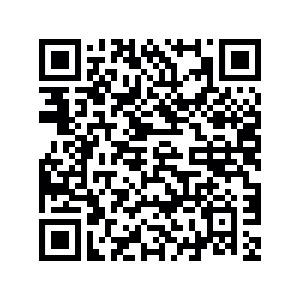
communications technology (ICT) equipment and software and, more importantly, I have been able to realign my work tasks and duties,” he says. “A flexible work arrangement has also improved my work-life balance after having a child with autism spectrum disorder.”
Proud First Nations man Chris is an air surveillance operator in the Air Force.
“I hope to lead First Nations youth into Defence,” he says. “Defence has enabled me the pathway to attempt to achieve this by being involved in Indigenous youth programs and PCYC information sessions for at-risk youth.” Inclusivity extends to welcoming people at different stages of life, too. Just ask Natalie, an industry experience placement student and defence scientist at DSTG.
“A university lecturer forwarded me an email about doing a placement at DSTG.
I thought it would only be for younger students,” she says. “I emailed DSTG to check that I could apply and the reply was a resounding yes!” – by Louise Meers
As the Executive Officer on HMAS Huon, Lieutenant Rachael Cosgrove empowers teams to bring the force to fight and win at sea
Rachael wanted to serve her country and be challenged, so she landed in Defence! She’s the executive officer and second-in-command in HMAS Huon, a minehunter coastal vessel.

She loves that her role is about empowering people: “You have to learn how to get the best out of everyone you have in your battle space.”
Rachael is also president of the Defence LGBTI Information Service (DEFGLIS), which delivers a safe and inclusive space that is trusted to advocate for and support the needs of LGBTQI members: “We work closely with commanders and managers to provide education and awareness pieces, as well as supporting our members through specific peer programs and networks.”
DEFGLIS also arranges events and opportunities for celebration and connection, strengthening ties to other members of the same diverse group.

Passionate about diversity, Rachael believes it helps drive agile, broad decision making, robust procedure and policy, and creates a workforce that is smarter and more innovative.
Growing up in Australia after fleeing war as a child motivated Mathan, corporal and airborne electonic analyst, to join Defence

Mathan was born in northern Sri Lanka in 1995, when a civil war was raging, forcing his family to flee their home country.
“Migrating to Australia allowed my family to raise us safely and offered them an opportunity to work and build their lives back up,” he says.
Mathan felt grateful for growing up in Australia and this gave him the motivation to give back in a Defence career.
He’s now an airborne electronic analyst in the Air Force, responsible for operating a suite of sensors on the P-8 Poseidon maritime patrol aircraft: “My analysis of incoming data is crucial to the success of missions.”
He loves that his role is objective-focused, that he gets a sense of achievement every time he steps off the aircraft, and that Defence provides a supportive environment, chaplains, psychologists and workshops: “I’ve also been fortunate to have a supportive chain of command at my unit who encourage us to pursue opportunities for professional and personal development.”
mathan airborne electronic analyst, air force Airborne electronic analyst, air force Military Training Employment training Principal Warfare Officer Course President, DEFGLIS Maritime Warfare Officer Executive Officer Leading Seaman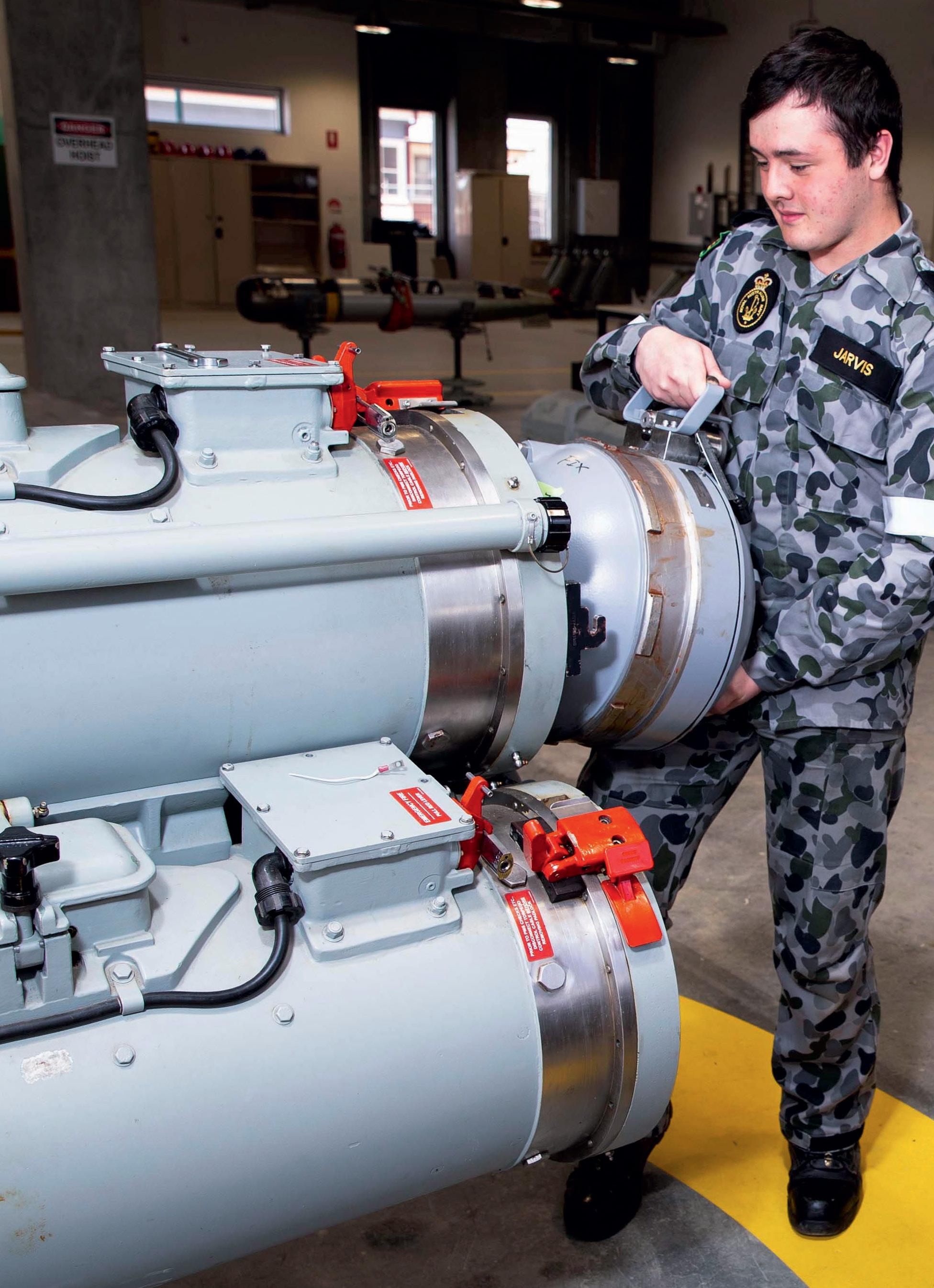
If you love getting hands-on experience and using STEM skills to be creative, solve problems and contribute to vital projects, a Defence apprenticeship could be the right path for you! Earn nationally recognised qualifications, work to support Australia’s national security and develop skills that will set you up for life.
Whether you’re keen to join the military or are looking for a civilian role, there are many STEM apprenticeship opportunities available that come with all the benefits of working for Defence. You’ll be choosing a career with purpose and working in high-demand areas. You could even be working on some of the most cutting-edge, technically advanced equipment in the world!
– by Danielle LucasThere’s a range of exciting civilian apprenticeships with Defence and government agencies, including:
• APS (Australian Public Service)
• ASD (Australian Signals Directorate)
• AGO (Australian Geospatial-Intelligence Organisation)
• DSTG (Defence Science & Technology Group)
You can get high-quality, in-demand skills in these apprenticeships that can set you up in a Defence career and are highly transferable to other industries. You could train in:
• Electronics • Mechanical
• Cyber security • Programming in IT
• Spatial information services
• Software development
• Drafting • Shipbuilding
Plus heaps more!
There are also awesome opportunities for Aboriginal and Torres Strait Islander students. Talk about options!
ELECTRONIC TECHNICIAN TRAINEES AT THE TECHNICAL TRAINING FACULTY AT HMAS CERBERUS, VICTORIA, AS PART OF THEIR INITIAL ENTRY TRAINING.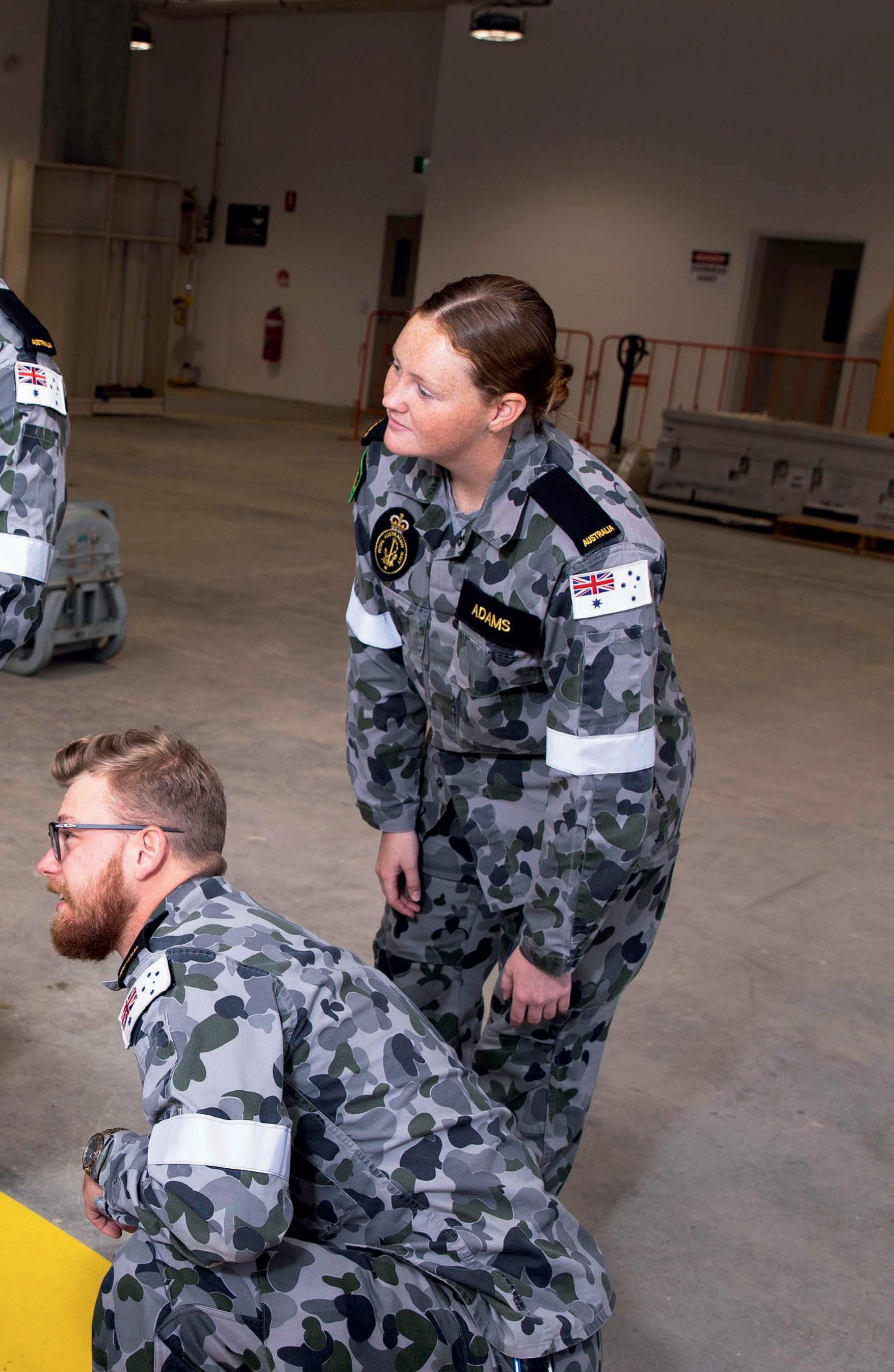
Navy, Army and Air Force need highly trained technicians and tradespeople to ensure every piece of their valuable equipment is in peak condition. From marine, electronics system, aviation or technicianstelecommunications to carpenters, electricians and more, the Australian Defence Force (ADF) offers a huge range of STEM careers throughout Australia.
Navy Marine Technician
Maintain and operate machinery and systems on ships and submarines.
Army or Air Force Carpenter Love building? As an ADF carpenter, you’ll tackle diverse building projects and gain great trade skills.
Explore your passion for cutting-edge technology by working on military vehicles and weapons systems.
Airforce Avionics Technician
Work on systems that control, navigate and arm the Air Force’s awesome fleet.
Join the ADF and get full trade and employment training following your initial recruit training. Completion of Year 10 (or equivalent) is required, with passes in English, maths, science and one other subject. Some trade roles also require science with a physics component. If you already have a trade, you can join the ADF with that qualification being recognised.
ADF Gap Year
Get a taste for military life with one year as an aviation support technician, where you’ll work on advanced military aircraft.
Defence TAFE Employment Scheme
Get a head start in your Defence career, getting paid to work part-time with the APS while you finish your studies.
APS Digital Apprenticeship Program
If you’re a problem solver with a passion for digital tech and are finished (or finishing) Year 12, this could be a great option for you.
Indigenous Apprenticeship Program
This 12-month program for Indigenous and Torres Strait Islanders provides on-thejob training in the APS (including Defence), while you work towards a nationally recognised Certificate IV or Diploma qualification. You’ll also get support including a buddy and an Indigenous mentor. Check out Services Australia for more info.
DEFENCE + APPRENTICESHIPS + STUDY
Certificate III in Engineering and Certificate II in Maritime Operations, RAN
Certificate IV in Aeroskills (Avionics), RAAF
Certificate III in Telecommunications Technology, Army
Certificate IV in Spatial Information Services, Australian Geospatial-Intelligence Organisation, APS
Certificate IV in Cyber Security, Australian Signals Directorate, APS
DEFENCE + APPRENTICESHIPS + JOBS
Navy Marine Technician $75,451*
Air Force Avionics Technician $75,451*
Air Force Aviation Support Technician (Gap Year) $71,750*
Army Telecommunications Technician $79,452*
Trainee Australian Public Service (Technical) APS Level 3 $48,162–$55,791
Source: defencejobs.gov.au/ jobs/, apsjobs.gov.au/s/ * Pay on completion of initial military training and initial employment training.
Grace is an electronic technician in the Royal Australian Navy and just getting started on her career journey. After completing Year 12, she worked as a sales assistant before deciding to pursue a career in Defence.
“I wanted to work in a diverse workplace and be able to explore different places while learning new skills and making new friends along the way,” she explains. “I am from a small country town in the middle of Queensland where there weren’t heaps of opportunities outside of mining.”
Grace initially became interested in the Defence Force after having members come and speak at her school about career opportunities.
“I did a lot of research into the Defence Force myself with the support of my parents,” she says.
In her current job, Grace is learning to understand and work with electronics in a Defence environment.

“This involves learning the basic electrical fundamentals and having the knowledge to fault-find in circuitry work to be able to maintain and repair complex systems, while still being an active member of Defence,” she says.
Grace has always been interested in STEM subjects, especially maths and science.
“I loved being hands-on and seeing how science, technology, engineering and mathematics come together,” she says.
And she’s already had the chance to work on some really cool projects as part of her apprenticeship, like making her own circuit boards and soldering them together. Her advice for young people interested in pursuing a career in STEM and Defence?
“If something piques your interest, say yes to any opportunities you’re offered because you never know what might happen!” – by Gemma Chilton
Grace wanted a hands-on career, and she’s found it in her role as a Navy Electronic TechnicianI wanted to work in a diverse workplace and be able to explore different places while learning new skills and making new friends along the way”
grace electronic technician, navy
A love of engineering led Charlie, captain and trade training troop coMmander, to a STEM gig with Defence where he skills up the Army’s newest tradespeople
Since he was a kid, Charlie has been passionate about the ‘E’ in STEM – engineering – after being inspired by his grandad. Wanting to also serve in the Army, he did a Bachelor of Engineering (Honours) (Civil) at the Australian Defence Force Academy in Canberra, combining academic study with military training.
“Defence has so many opportunities,” he says.
“I always wanted to be a civil engineer, but I also wanted a job that makes a difference. Serving in the Army gives me the opportunity to directly contribute to Australia, but also help people overseas who need it. I also love working in a strong team, and I love staying fit – both of which are key parts of working in Defence.”
One of those opportunities saw him working on the Army Aboriginal Community Assistance Program in the remote
town of Pormpuraaw, Qld: “We delivered health support to the local Aboriginal people and constructed a number of projects to contribute to the community.”
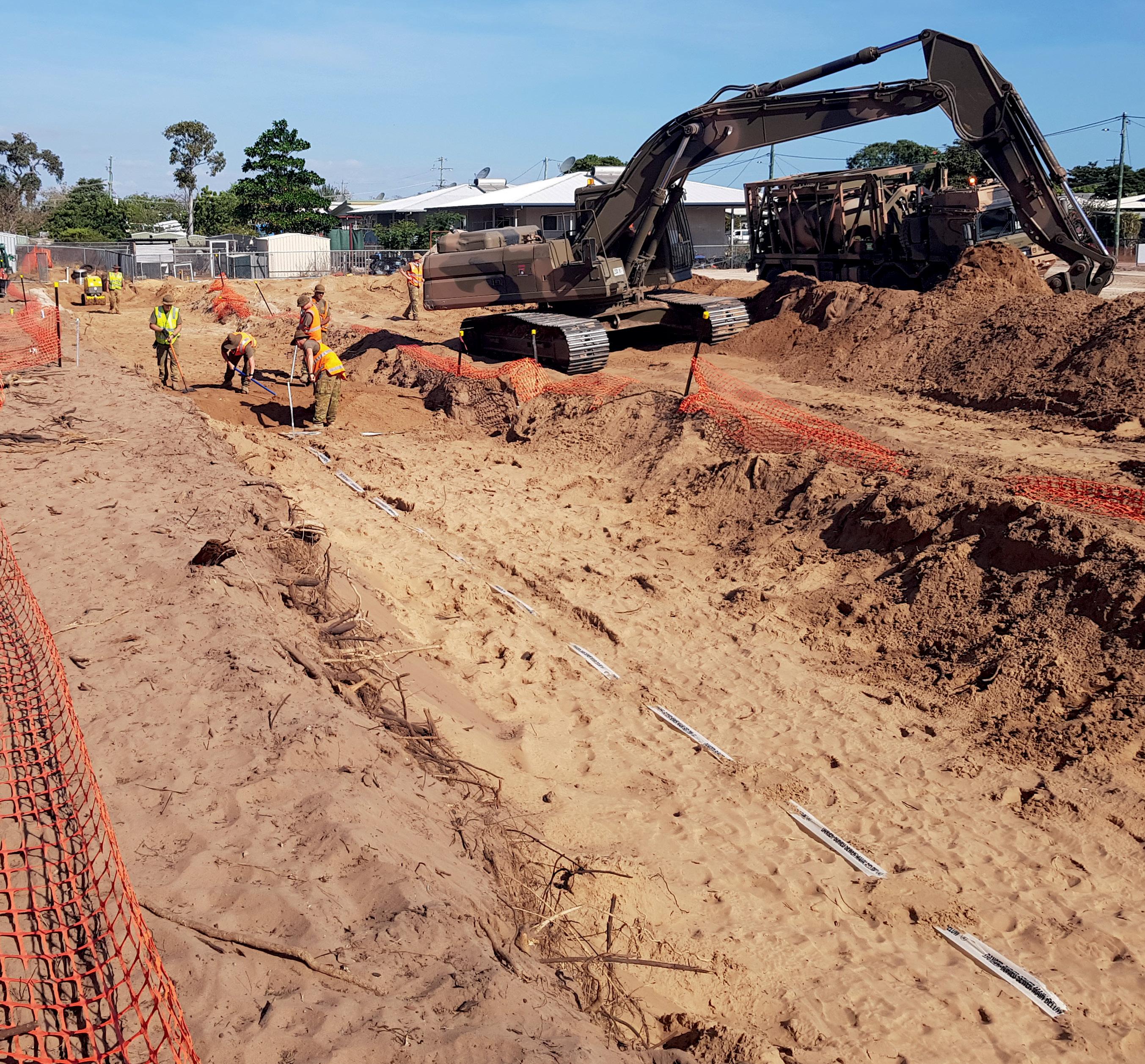
As Trade Training Troop Commander at the School of Military Engineering in Holsworthy, NSW, Charlie manages and supervises the Army’s new tradespeople in training, who all spend time gaining civilian trade experience.
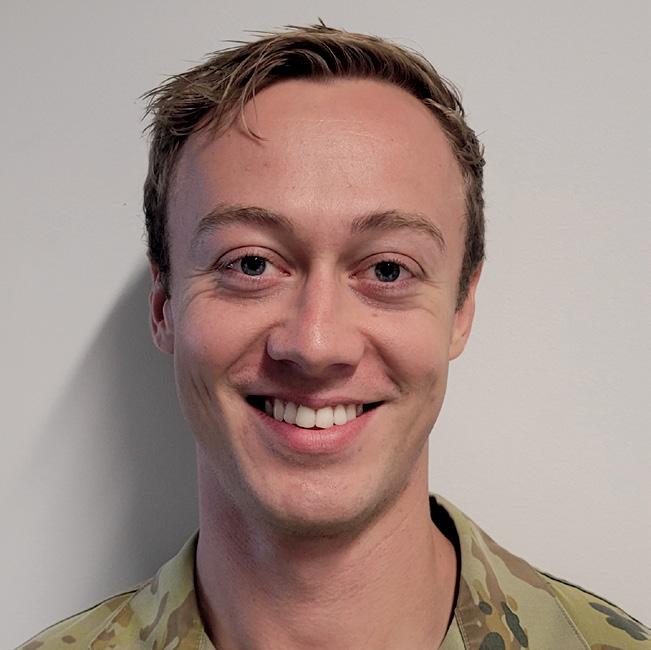
“I make sure they complete their training and are meeting the standards of their trade, to be ready for when they join the wider Army as fully qualified carpenters, plumbers and electricians,” he says.
This year, he looks forward to meeting more newcomers and setting them up with the skills they’ll need for the future. His advice? “Get in touch with a family member or friend who used to be in Defence. Even if they weren’t in STEM, there is a good chance they know someone who was.”
– by Louise MeersAlice switched from media to a digital apprenticeship and nailed an awesome job at the Australian Signals Directorate
Alice has always been keen on tech, but never envisioned a STEM career. After graduating with a communications degree, she ended up on a vastly different path when she signed up for a digital apprenticeship through Defence’s Digital Transformation Agency.

“I actually applied out of curiosity,” she says. “And I ended up uprooting my life for a 180-degree career change.”
Alice now works as a trainee business analyst, gaining invaluable ICT skills, meeting like-minded colleagues and mentors, and working to bridge the gap between IT expertise and organisational needs by devising effective processes for the agency’s partners in business and government.
With an epic list of projects constantly on the go, she has loads on her to-do list. Just don’t ask her for any details...
“The most exciting projects are often the most hushhush,” she says. “You’ll just have to make tracks to work here to find out!” – by Cassie Steel
DTA Digital/ICTApprenticeshipAircraft Structural Technician Trung always dreamed of becoming an astronaut, but he ended up scoring a Defence gig a little closer to Earth
Aviation has always been Trung’s thing.
Dreaming of a career in space, he spent his childhood looking up at the sky and getting excited over anything that flew.
“I wanted to be an astronaut,” he says. “But getting up close and personal with aircraft every day is still a childhood dream fulfilled.”
Raised in Vietnam, the biggest hurdle in Trung’s pathway was getting the support from his family to kickstart a career in the Australian Defence Force. With a mother who’d lived through the Vietnam War, it took a lot of convincing that working with military aircraft was safe, secure – and rewarding.
“I showed my mother that what I do protects the nation,” he says. “Australia adopted three generations of my family post the Vietnam War – and I see this as a way I can return the favour.”
Upon applying for the Air Force after high school, Trung got skilled up – and fast – in some pretty
specific trades. Through Defence, he completed a Certificate IV in Aeroskills (Structural), which he followed with structural tech and trade supervisor qualifications.
These days, Trung spends his weekdays working on aircraft – most-recently the C-17A Globemaster – which means quadruple-checking their model-specific structure, skins, pipeline integrity and attachment hardware.

One day he might be using a drone to carry out a paint survey on the top of a plane – the next, drafting detailed technical drawings.
“We’re one of the last trades to fabricate aircraft parts locally,” he says. “I love being able to work physically, too.” – by Cassie Steel
i showed my mother that what i do protects the nation”
trung aircraft technician,structural air forceCert IV in Aeroskills (Structural) Aircraft Structural Fitter
Imagine using food and nutrition science to make sure our military personnel perform at their peak. Or working to ensure the food security of Australia and other nations through scientific research, humanitarian aid or by defending our shipping and trade routes. Sounds pretty rewarding, right?
You may not have even realised that Defence offers careers in food and agriculture, but if you’re interested in studying and working in fields like exercise and nutrition, food technology, civil engineering, chemistry or environmental science, plus you want a career that has a global impact and supports our national interests, then this career path might just satisfy that appetite. – by
Danielle LucasZachary is using his cooking skills to keep Navy personnel nourished – and collecting loads of qualifications along the way!
After finishing Year 12, Zachary was looking to gain a qualification as a commercial chef – and he got it, plus an extra qualification in fitness, by joining the Navy. Now, Zachary works as a maritime logistics chef, preparing and cooking food for the people on the ship.

Ensure nutritional meals will sustain service personnel across all environments, including soldiers in operational zones.
Food Technologist
Use sports and military science to ensure ADF members get the nutrition they need to perform at their peak.
Use cutting-edge tech like UAVs, satellites, spectral cameras and CubeSats to map and model plant growth, crop yields and other plant activity remotely.
Biofuel Chemist
Explore the use of new biofuels. Could jets, ships and tanks run on fuel from algae or sugar cane? The US Navy has committed to getting 50% of its energy from alternate fuel sources. As an ally, DSTG is working to ensure our own platforms can operate on these fuels for joint exercises.
Civil Engineer
Provide humanitarian aid during crises and make sure communities have access to essential services like water and electricity.
DEFENCE + FOOD & AGRICULTURE + STUDY
Bachelor of Engineering (Honours) (CDF) (Civil), UNSW (ADFA)
Bachelor of Exercise and Nutrition Sciences
Bachelor of Science (Environmental Science)
Bachelor of Science (Chemistry major)
Certificate IV in Human Nutrition
DEFENCE + FOOD & AGRICULTURE + JOBS
Army Catering Officer $85,051*
Food Technologist $78,653**

Army Civil Engineer $90,629*
Navy Communications Operator $73,253*
Environmental and Agricultural Scientist $76,000**
Research Chemist $74,293**
Source: Payscale, Indeed and defencejobs.gov.au/jobs/ * Pay on completion of initial military training and initial employment training. ** Average base salary
In his Navy career, Zachary has been on some really cool deployments, including the world’s biggest international maritime exercise: Exercise Rim of the Pacific (RIMPAC) in 2022. Conducted every second year off Hawaii, it includes naval war games at sea, a sports tournament and other events that allow sailors and officers from participating nations to build stronger relationships. Zach loved meeting sailors from other countries with the same job and seeing how they ran their kitchen, aka galley. – by
Certificate in Commercial Cookery Certificate in Fitness Able Seaman, Navy Maritime Logistics Chef, NavyIf you’re interested in a future-focused career that’s out of this world, a STEM job with Australia’s new Defence Space Command should be on your radar. Established in early 2022, the Defence Space Command brings together experts from the Navy, Army and Air Force, government agencies and private companies, with the joint goal of increasing Australia’s space capabilities, ensuring our access to space and promoting global security and a safe space environment. With a whopping $7 billion invested in the Defence Space Command over the next decade, there will be no shortage of career opportunities. From designing and launching satellites to working on hypersonic technology and electronic warfare, you’ll have the chance to work with some really cool advanced technology.
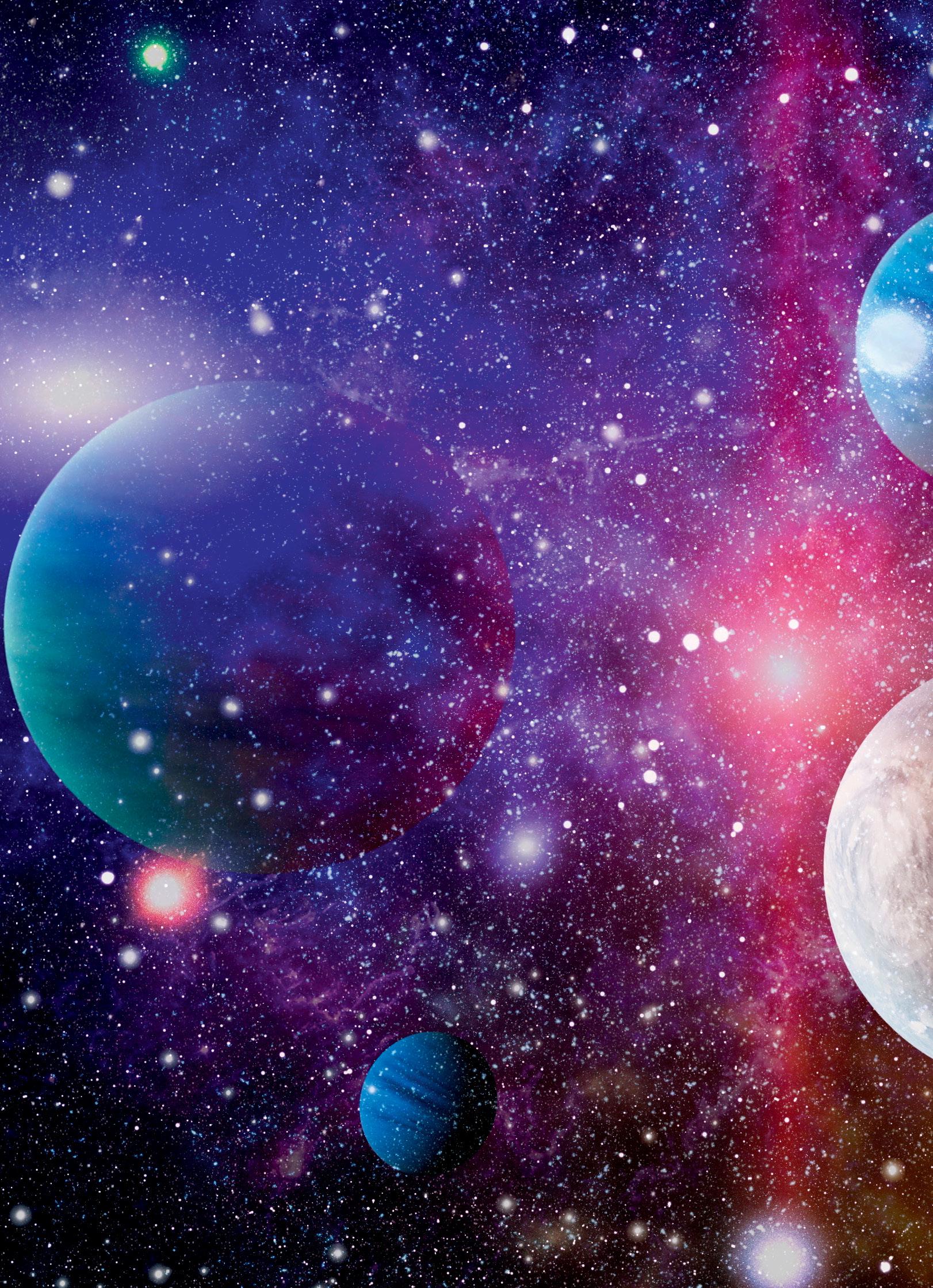 – by Danielle Lucas
– by Danielle Lucas
• Check individual universities for minimum entry requirements, like prerequisite or recommended school subjects and ATAR cutoffs.

• Follow the application process for the sector of Defence you’re applying to – this can include an online application, in-person testing, interviews, physical and medical checks, and security checks.
• Join the military. To attend ADFA as a trainee officer and complete your degree or join other ranks (technical) through general entry, you’ll need to complete the Defence Force recruiting process.
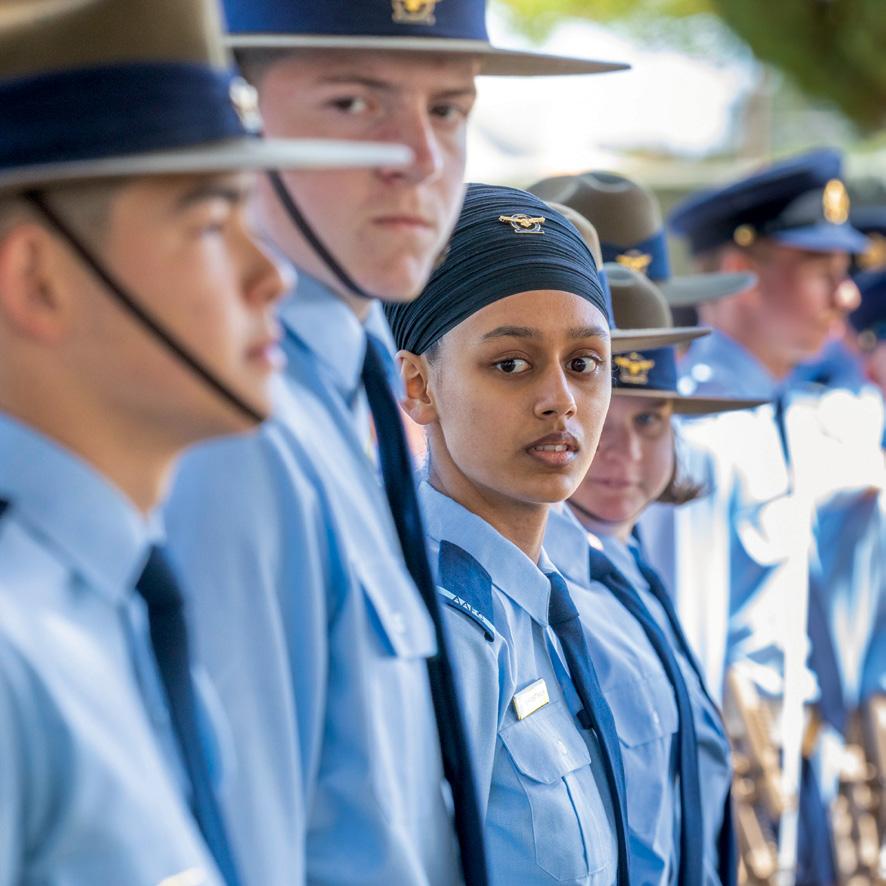
• There’s a place for you! Defence careers are open to all Australians, regardless of gender, sexuality, ethnic origin or cultural background.
The STEM Cadetship program and the Defence Graduate program are two opportunities offered by Defence public service to students, where you can study and work at the same time, gaining valuable skills and experience. These programs can lead you to exciting roles with the Australian Geospatial-Intelligence Organisation (AGO) or Defence Science and Technology Group (DSTG), working on cutting-edge technical projects like designing and launching satellites or analysing intelligence data.
 SHUTTERSTOCK
JAY CRONAN
LAC STEWART GOULD
SECRETARY OF DEFENCE GREG MORIARTY DURING A PRESENTATION TO DEFENCE GRADUATE PROGRAM PARTICIPANTS AT ADAMS AUDITORIUM, AUSTRALIAN DEFENCE FORCE ACADEMY, CANBERRA.
SHUTTERSTOCK
JAY CRONAN
LAC STEWART GOULD
SECRETARY OF DEFENCE GREG MORIARTY DURING A PRESENTATION TO DEFENCE GRADUATE PROGRAM PARTICIPANTS AT ADAMS AUDITORIUM, AUSTRALIAN DEFENCE FORCE ACADEMY, CANBERRA.
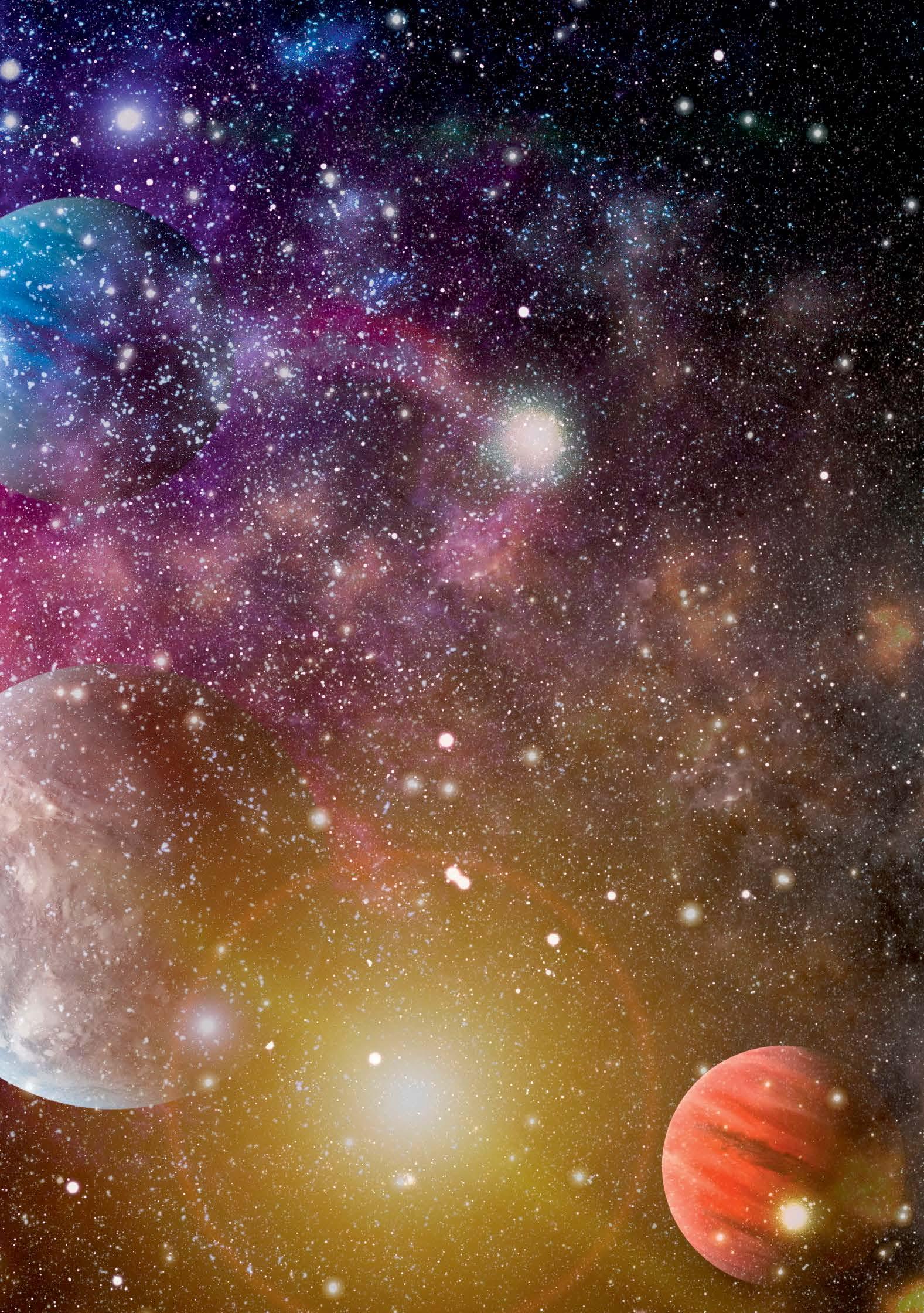
Jaslyn always loved space and tech, even though STEM subjects weren’t her strongest at school. Now? She’s on her way to becoming a space researcher
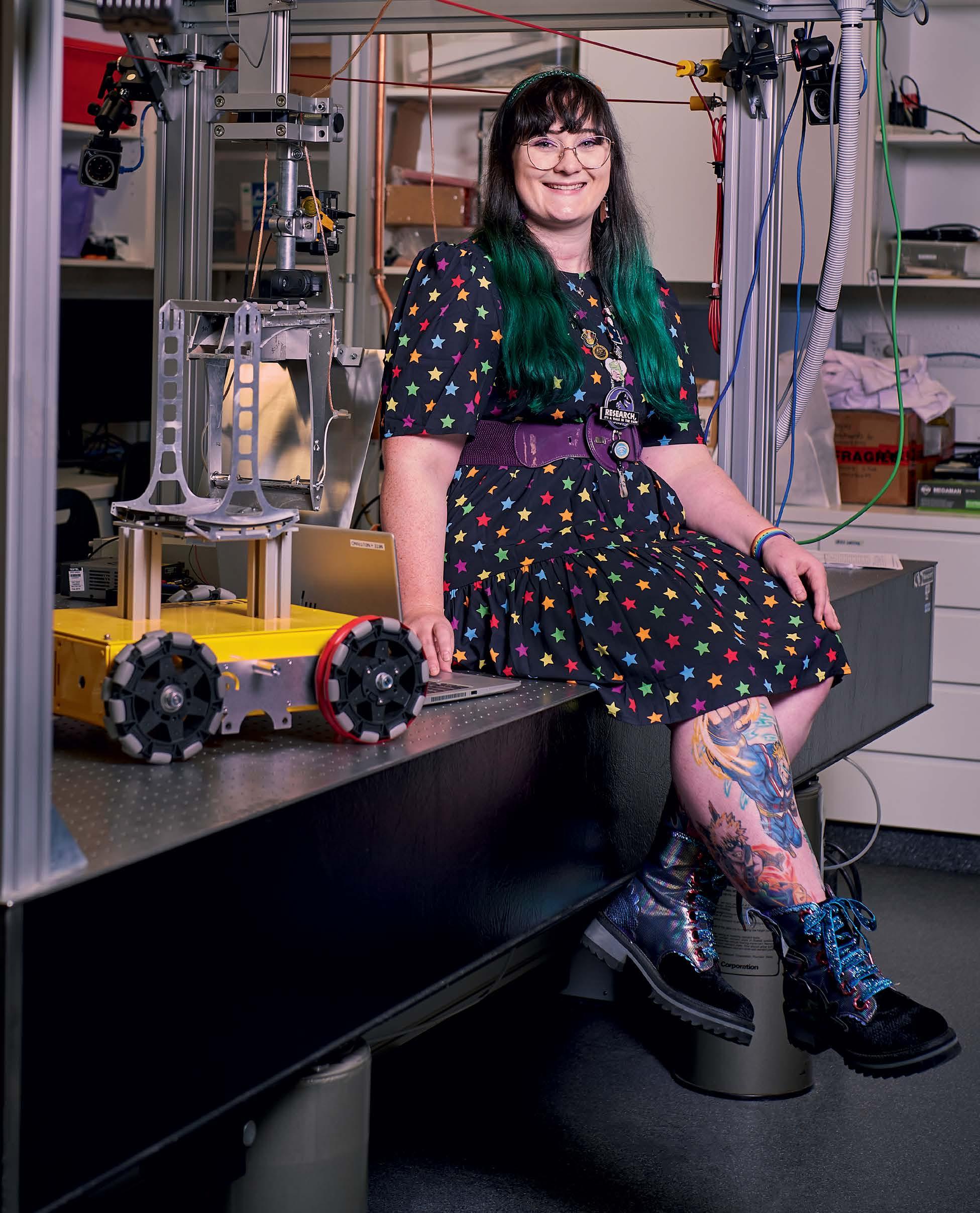
PhD Candidate, Mechanical and Aerospace Engineering
Bachelor of Engineering (Aeronautical) (Honours), UNSW (ADFA)
Bachelor of Aerospace Systems Engineering (Honours)
Bachelor of Technology (Aeronautical)
Research Scientist and Engineer, DSTG
Jaslyn was always fascinated by science, space and technology, and is a big sci-fi fan. However, science wasn’t her strongest subject at school. In Year 12, her highest marks were in theatre and English! But that didn’t stop her following her dream STEM career path.
“I pursued my passions to study science and engineering at university and now get to do science every day, which is really exciting,” she says.
In her final year of uni, she joined DSTG as a Defence STEM Cadet. After graduating, she landed a full-time research position with DSTG’s Material Awareness Group. In this role, Jaslyn combines her interests in physics and robotics, working for a “phenomenal” multidisciplinary team, presenting at conferences and helping plan critical space projects for Defence.
Jaslyn is now undertaking her PhD in mechanical and aerospace engineering at Monash University, sponsored by DSTG. For this, she’s conducting research into detecting impacts in air and space structures that will be of critical importance to Defence in the near future.
“I feel incredibly privileged to have DSTG sponsoring my PhD full-time and giving me the chance to develop new fundamental research that meets Defence outcomes,” she says.
Her advice to those interested in a career like hers?
“Follow your passion and don’t let someone tell you that you can’t do something. Try it yourself and if it fails, you’ll still learn something.” – by Gemma Chilton
STEM Cadetship Program, dstg
Check out some of the exciting innovation projects happening in the Defence space sector:
The M2 satellite mission is a collaborative project between the University of NSW Canberra Space and Air Force. These satellites are testing communications architecture and other satellite technologies built and developed right here in Australia!
The Royal Australian Air Force space surveillance telescope will survey the night skies, detecting and cataloguing objects in geosynchronous orbit (one that matches the Earth's rotation on its axis) more than 30,000km above the Earth. This is a critical band for telecommunications satellites.
Bachelor of Engineering (Honours) / Bachelor of Science
Bachelor of Mathematics
Air Force Avionics Technician Initial military training and Cert IV in Aeroskills (Avionics)
DEFENCE + SPACE + JOBS
Air Force Aeronautical Engineer $90,629*
Air Force Mission Controller $80,857*
Air Force Intelligence Analyst (Geospatial) $79,555*
Army Telecoms Technician $79,452*
Air Force Avionics Technician $75,451*
AGO Grad Program Starting salary of $71,207 and APS
Level 4 salary of $77,739 on completion
Source: defencejobs.gov.au/ jobs/, apsjobs.gov.au/s/
* Pay on completion of initial military training and initial employment training.

I get to do science every day, which is exciting”Bachelor of Applied Science Bachelor of Engineering (Honours (Advanced Manufacturing and Mechatronics)
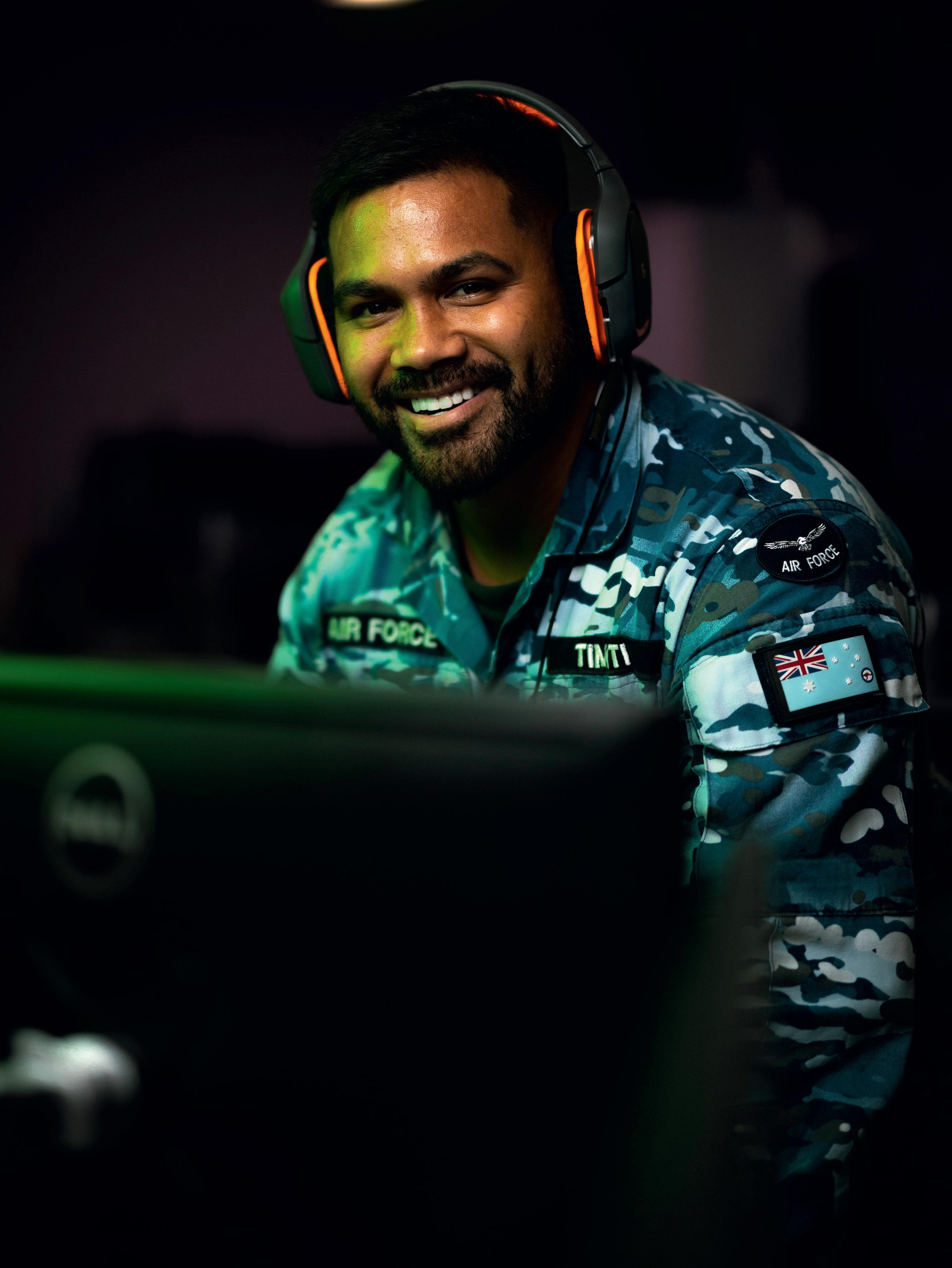
First Nations Air Force Surveillance Operator Chris started out as a personal trainer, but now flexes his skills mid-air, protecting our skies
Chris comes from a linguistically diverse background, identifies as a proud First Nations person and is passionate about shaking up stereotypes.
“Coming from a warrior race, every time I step into the operations room I feel like I’m doing my family and past generations proud,” he says. “I’m changing the narrative and I hope to lead other First Nations youth into Defence.”
After school, he channelled his love of sport and fitness into working as a personal trainer, before applying for a role as a trainee surveillance operator in the Air Force.
On an average day, Chris works on secret missions using a network of radars and intelligence systems to direct, categorise and identify aircraft and service vessels in designated operational zones.
As with any future-proof gig, STEM skills are key.
“At first it was daunting going into a STEM role, as my skills weren’t as strong as they could be, but I’ve been able to strengthen them,” says Chris. “Maths in particular is necessary for tasks like calculating aircraft speeds and how much fuel an aircraft requires.
“In Defence, there are a lot of resources to support you and get you to where you want to be.” – by Cassie Steel
Catherine’s love of sound and lighting in school musicals and theatre productions sparked her interest in becoming an engineer.
She studied mechanical and aerospace engineering at uni and was drawn to Defence by the huge role they play in Australia’s aerospace industry – and the perks.

“My friend told me about the Defence University Sponsorship program, where the ADF pays for your degree and you earn a salary while you study,” she explains. “I applied through Defence Force Recruiting and was lucky enough to be offered an undergraduate sponsorship position.”
Catherine is now a trainee engineer, shadowing senior engineers at the Army’s combat aviation unit, which houses the Eurocopter Tiger armed reconnaisance helicopter. She gives engineering advice about maintenance issues, coordinates scheduled maintenance and conducts technical investigations following incidents on aircraft.
The best part of her job?
“You get to work with interesting equipment and travel to places that you wouldn’t get with a normal engineering office job. I’m really looking forward to learning about all the cool emerging technologies I could work with in the future.” – by Louise
MeersSarah
never saw herself working in Defence, despite her dad being in the Air Force, but realised it could offer the variety she wanted in a career: “I wanted the ability to work with different technologies in different environments and change my role every few years.”
After studying engineering at uni, Sarah undertook officer training and began working in Air Force engineering. In her current role in Space Force Design and Integration, she analyses various capabilities that Defence has and finds ways to better meet the operational needs of the military.
“It’s not often in engineering you get to both develop a need and find the solution. Usually you get given one or the other, so I am really enjoying that,” she says.
In her last role, Sarah even worked on a space-based missile warning network: “The technology is amazing. I loved working with it and learning as I went.”

Her advice for anyone considering STEM and Defence?
“Don’t be scared of doing what you enjoy and changing things up when you want a change.” – by Louise
 Meers
Meers

Don’t be scared of doing what you enjoy”Bachelor of Engineering (Honours) Army Aviation Engineering Officer, ADF Engineering work experience, BHP Mitsubishi Alliance
Over the next decade, the Defence Science and Technology Group (DSTG) will spend $1.2 billion to develop quantum technology in applications such as sensing, navigation and communications as a priority area of their Next Generation Technologies Fund, which will develop high-tech solutions for the “future Defence Force after next”.
The fund has already paid for some very cool projects. These include researching whether quantum radar can lock onto stealth aircraft, using lasers or tiny diamonds to sense metal objects through walls or track submarines, and a super-precise portable atomic clock that ticks three trillion times per second!
As well as helping keep our Defence Force safe and in top form, these technologies can also be applied to applications including geo-exploration, vehicle and smartphone navigation systems. – by Nadine Cranenburgh


Here are some of the ways quantum technology can supercharge applications in Defence and beyond.
Materials: Quantum microscopes and nanosensors could help develop innovative materials to improve Defence operations as well as medical technology.
Navigation and communication: Quantum technology will be more stable and precise than existing tech, which will improve the speed and accuracy of digital communications and navigation systems.

Human machine interfaces: Can you imagine controlling a stealth aircraft with your mind? Quantum magnometers could make it happen by providing advanced brain activity imaging through wearable devices.
GPS is more than a handy way to find your way from A to B. In Defence, the US-run satellite positioning system is the key to precise military manoeuvers, navigation and guided weapon targeting. If GPS is lost or jammed, there is no alternative system to keep our Defence Force on track.
The loss of GPS could be due to factors including cyber attacks by hostile forces or poor satellite reception when operating underwater, underground, in the mountains or in dense cities.
DSTG is working on a project to combine emerging quantum tech with conventional positioning to make sure Defence has access to accurate positioning and navigation data at all times. More info here: youtu.be/Ct2LVfUWImA
The annual Army Quantum Next Generation Challenge gives university students, researchers and talented Army personnel the opportunity to devise and pitch innovative applications of quantum tech. In 2021, the challenge was to protect soldiers and equipment from detection by a highly accurate drone-mounted quantum magnetometer. Solutions included using the Earth’s magnetic field as camouflage and decoy magnetic field generators. A team from QUT devised the winning concept – a magnetic field generator to keep an Army tank safe by reducing its magnetic signature on the fly.
The Army’s Quantum Technology Roadmap lays out future plans for quantum tech, including developing the top solutions discovered in the innovation challenges and supporting their implementation in the field.
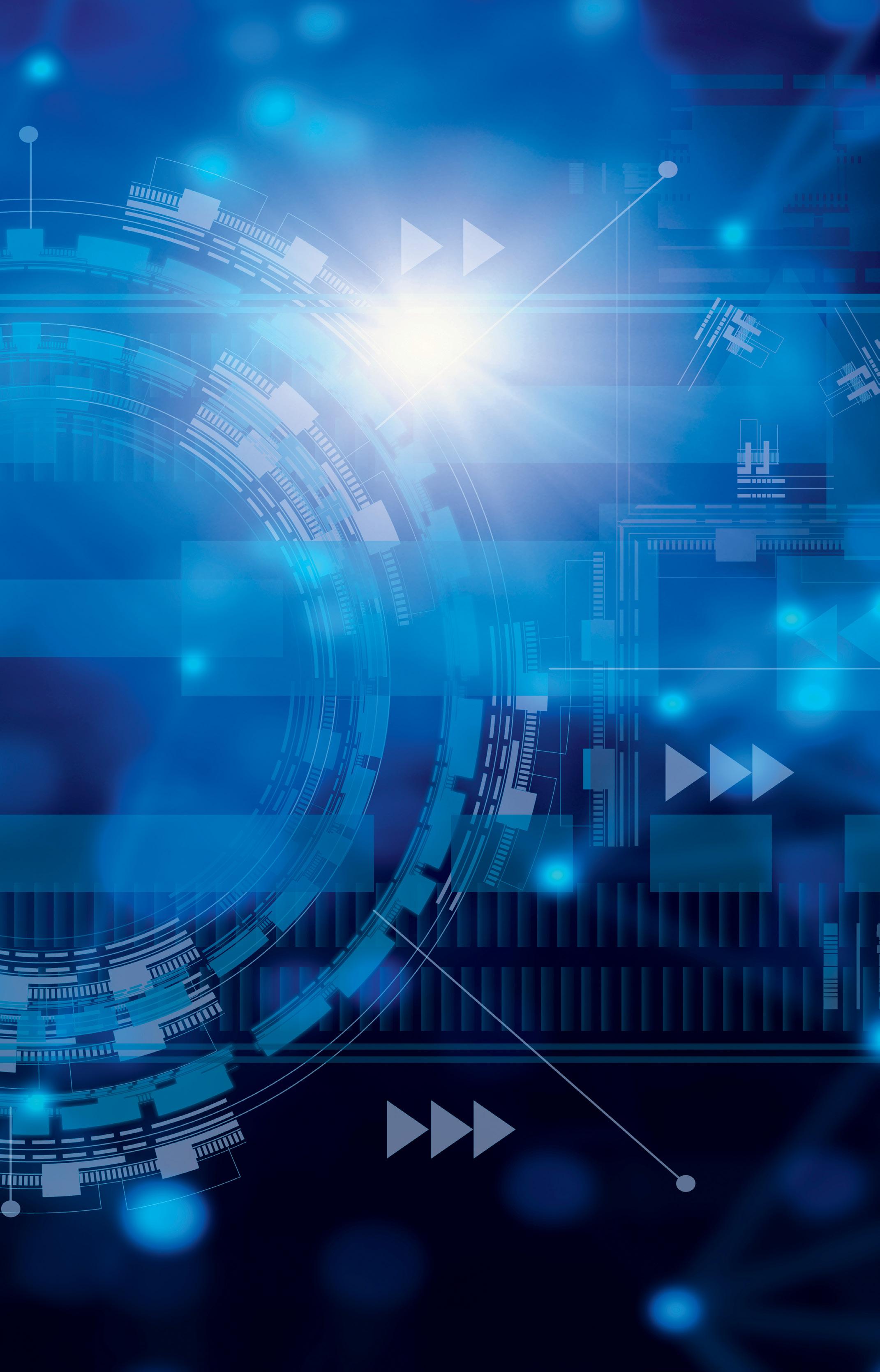
To become a quantum Defence researcher, you’ll need an Honours or Masters degree in science, electrical engineering or materials science. After uni, you can apply for the Research and Innovation Pathway of the Defence Graduate Program. Over 12 months it involves two rotations in DSTG, the ADF or Defence industry, in roles that could include a quantum project or lead to a project working in quantum technologies. You could also look out for opportunities to partner with Defence through PhD or postgraduate projects.
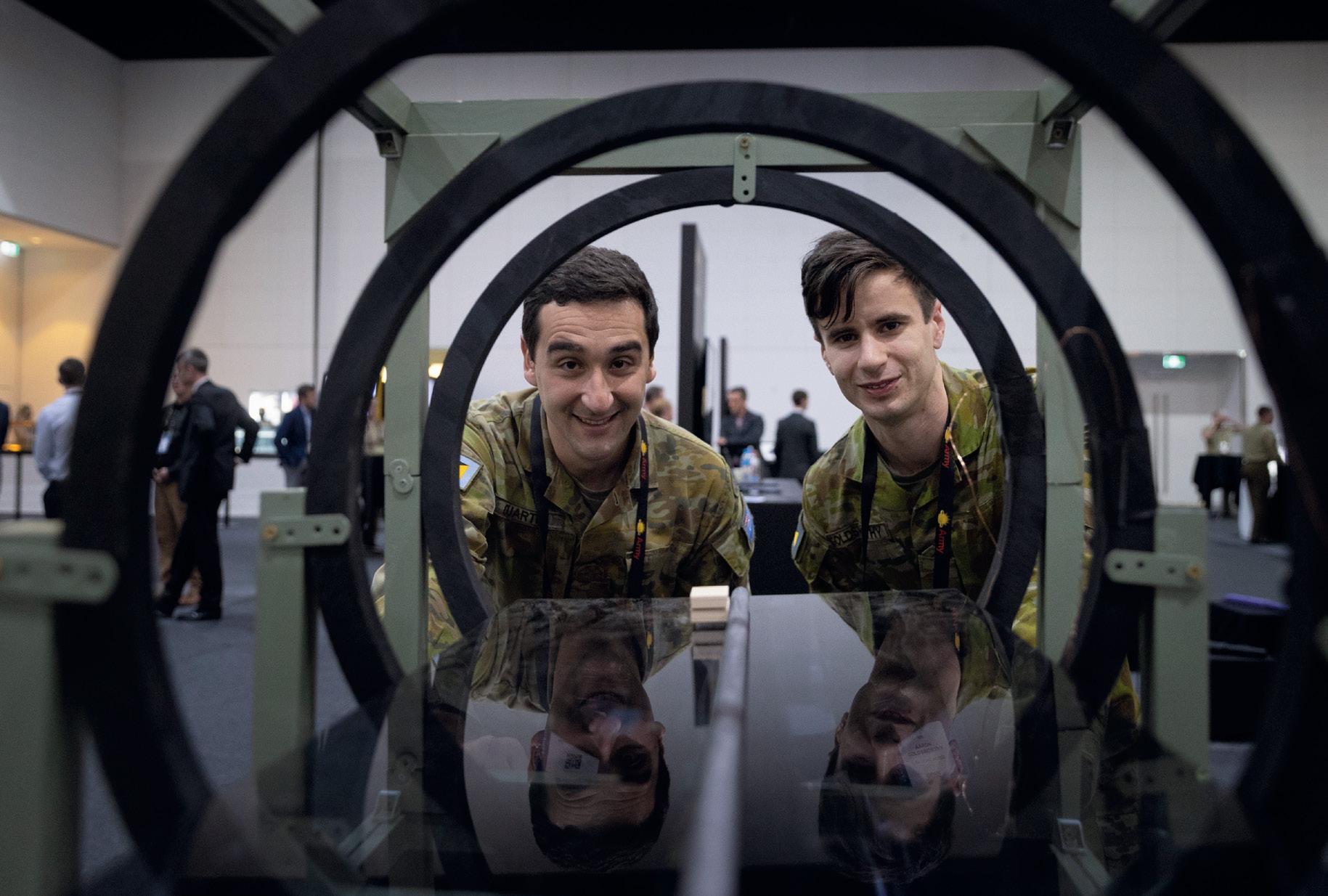
A fascination with natural phenomena led Dr Alexander into science and he now uses quantum physics and his chemistry skills in Defence
Always wanting to know the ‘why’, ‘what’ and ‘how’ behind everything, Alexander was drawn to chemistry and physics. After studying science at uni and working in academia, he wanted to apply his STEM skills elsewhere.
As NAVIGATE Science Advisor for DSTG, Alexander develops collaborative research projects between Defence, academia at the DualTech Ultrashort and Short Pulsed Laser (DualTech-USPL) facility at the University of Adelaide, which develops and builds laser tech.

Drawing on his laser spectroscopy skills, he studies how light interacts with matter
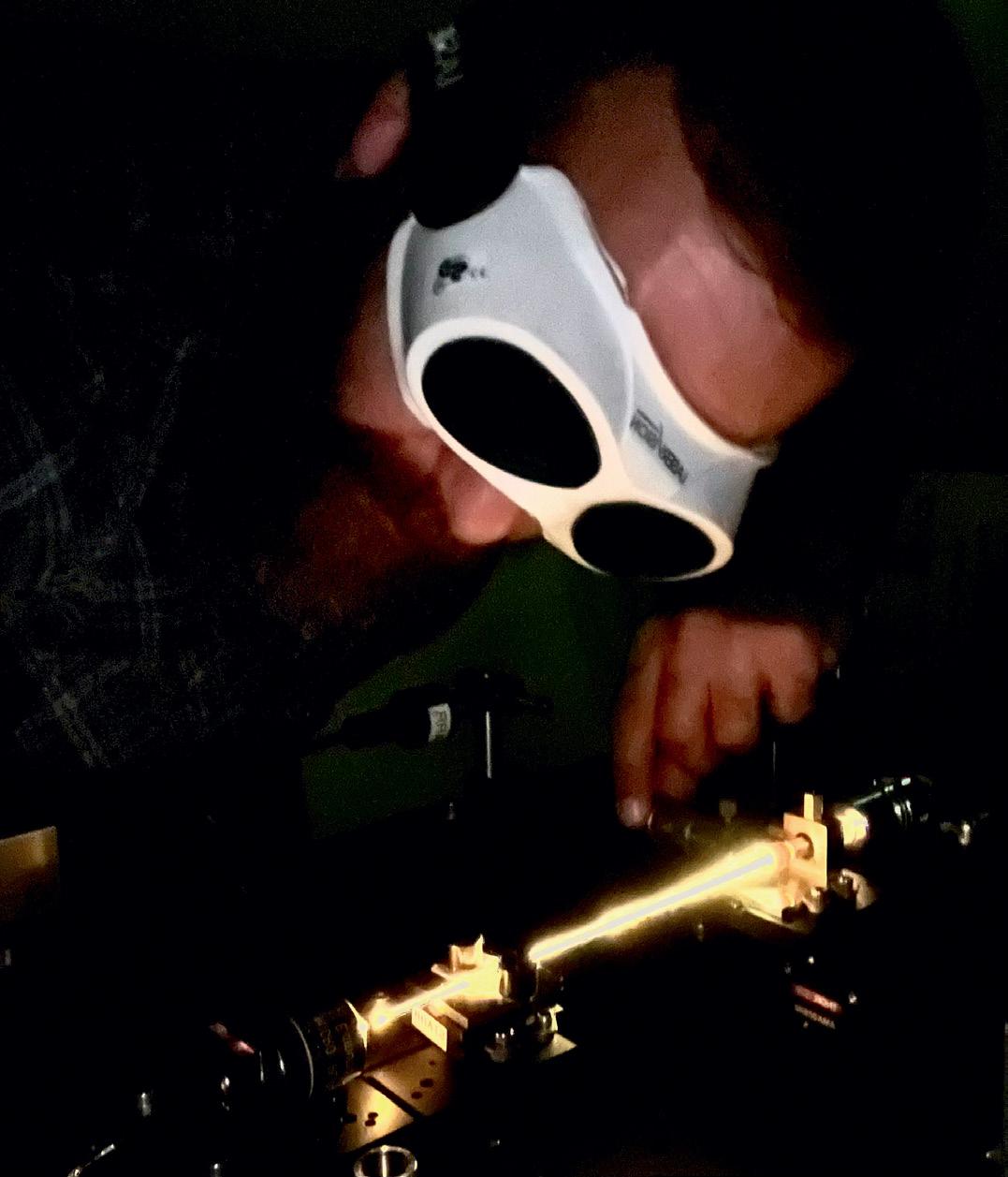
“This is a fancy way of saying that I blast molecules with lasers and watch what happens!” he explains. “Understanding observations from these experiments involves performing complex calculations that rely on quantum physics.”
Alexander’s advice? “Talk to as many STEM and/or Defence professionals as you can to learn about all of the exciting opportunities out there.”
– by Louise MeersBachelor of Science (Honours)
Bachelor of Philosophy (Honours)
Bachelor of Engineering (Materials Science) (Honours)
Bachelor of Engineering (Electrical and Computer Systems) (Honours)
DEFENCE + QUANTUM + JOBS
Defence Graduate Researcher APS Level 4. Training salary starts at $65,133, on graduation $71,109
Source: apsjobs.gov.au/s/
Talk
to as many STEM and/or Defence professionals as you can”
Whether designing submarines and warships or keeping weapons, propulsion systems and information systems fighting fit, there are heaps of ways to put STEM skills to work in a marine career within Defence. There’s something for everyone, from IT to trade and engineering roles, and cutting-edge research.
Under the National Naval Shipbuilding Enterprise, the Australian Government is
Working on a warship or submarine is not your usual 9-to-5. You’ll learn skills outside your main role, including medical support and seamanship. You may also work in shifts or ‘watches’. When you’re ‘off watch’, you can relax and catch up on video games or exercise (there are onboard gyms), watch a movie or email your family. Going ashore to catch up with friends or experience new countries and cultures is also a highlight.
There are many pathways into a Defence marine career. Check these out:
Naval architect
Highly specialised engineers who design, build and keep seagoing vessels up to spec. A good first step is studying a Bachelor of Engineering (Naval Architecture) at UNSW (ADFA).

Navy marine or electronic technician
Navy tradies maintain and operate the electronic, weapons, communications, navigation, control and propulsion systems of ships and submarines. Sign up for full training and great conditions while earning a wage.
Navy communications and information systems operator
If you’re interested in frontline cyber security, network admin or managing encrypted communications, this highpriority role may be for you. Learn on the job and get paid as you go.
committed to spending up to $183 billion to create a secure and sustainable local shipbuilding industry. This will ensure upgraded facilities and a continuous stream of projects – creating secure STEM jobs for young Australians keen to try out a Defence career.
This includes Navy careers as well as research, general trades, education and training, logistics and so much more. Interested? Head to the Naval Shipbuilding College website and check out the free 30-minute taster course to get started.
In 2021, the Australian government made the decision to invest in a fleet of nuclear-powered submarines and started the National Nuclear Powered Submarine Taskforce. A priority for Defence is upskilling the nuclear submarine workforce of the future. This includes uni scholarships of up to $20,000 per year for four years (or the rest of your degree) if you're studying an engineering or physics course
If you’re at uni, you can also apply for the Defence STEM Cadetship program. You’ll build real-world skills in 60 or more days of paid Defence work placements each year and get assistance with uni expenses and HELP payments as well. At the end of your degree, you’ll have a full-time Defence job in an exciting new field.
– by Nadine CranenburghThere are university scholarships of $20,000 a year for up to four years, available from 2023 to 2027, to encourage undergraduate students to continue in STEM disciplines relevant to nuclear science and engineering. Looking for more info? Check out: defence.gov.au
/NPSTF
DSTG works on cool science and technology projects like undersea combat and surveillance, nuclear subs and remote undersea surveillance. Working as a STEM grad at DSTG is your ticket to keeping the Navy’s current and future fleet safe and operating at its peak. Here are some of the roles on offer:
Work on cutting-edge scientific analysis and naval architecture assessments to make sure current and future ships, submarines and automated vessels perform to the Navy’s high standards.
The sea exerts massive pressure on vessels, particularly submarines. If you have a passion for computer modelling and simulation, you can help improve structures to keep sailors safe.
There’s more to naval vessels than metal hulls! Put your mechanical or electrical engineering skills to work on generation, battery storage and propulsion tech.
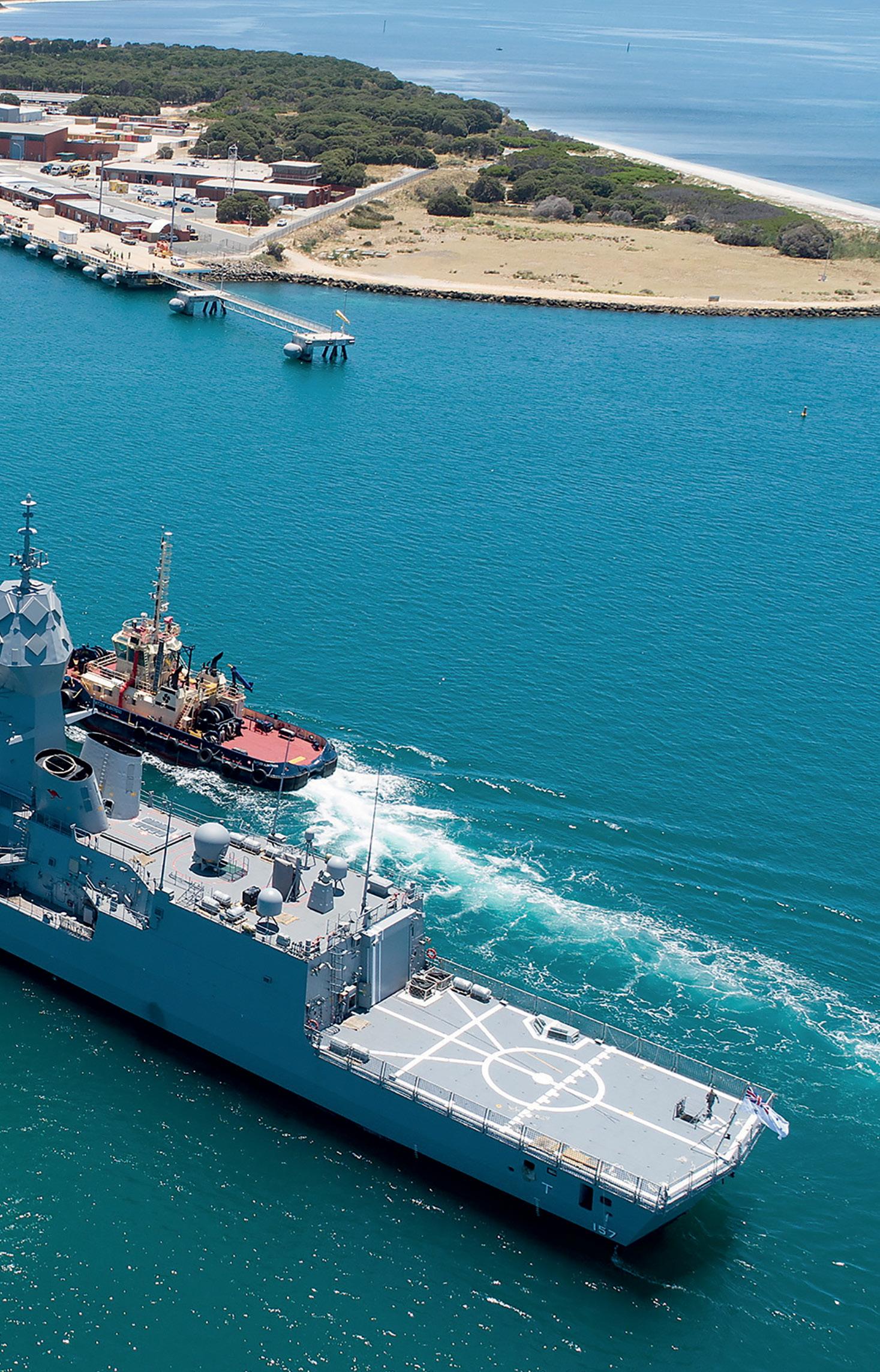
Can you rise to the challenge of improving how the Navy fleet performs when faced with weapon attacks, extreme weather and sea conditions, fire and smoke?
Bachelor of Engineering (Naval Architecture) (Honours), UNSW (ADFA)
Royal Australian Naval College
Naval Shipbuilding College
Bachelor of Science
Bachelor of Engineering (Mechanical)
Bachelor of Engineering (Electrical and Computer Systems)
DEFENCE + MARINE + JOBS
Marine Technician Submariner $88,437*
Mechanical Engineer $100,845*
Electronics Engineer Submariner $106,884*
Naval Architect APS Level 4, $71,207–$77,739
Systems Engineer APS Level 4, $71,207–$77,739
APS STEM Cadet (Nuclear Science)
Trainee salary starts at $50,608 (pro rata), then APS Level 4 at $71,207–$77,739
MAINTENANCE
Source: defencejobs.gov.au, apsjobs.gov.au/s/
HMAS PERTH RETURNS HOME TO FLEET BASE WEST FROM AN EXTENDED PERIOD OF AND UPGRADES AT THE AUSTRALIAN MARINE COMPLEX AT HENDERSON IN WESTERN AUSTRALIA.Afterstudying mechanical engineering at uni, Loretta wanted a career that was exciting and outside the realms of a regular office job. Not one to do anything by halves, she decided to join the Navy and also became a volunteer firefighter.
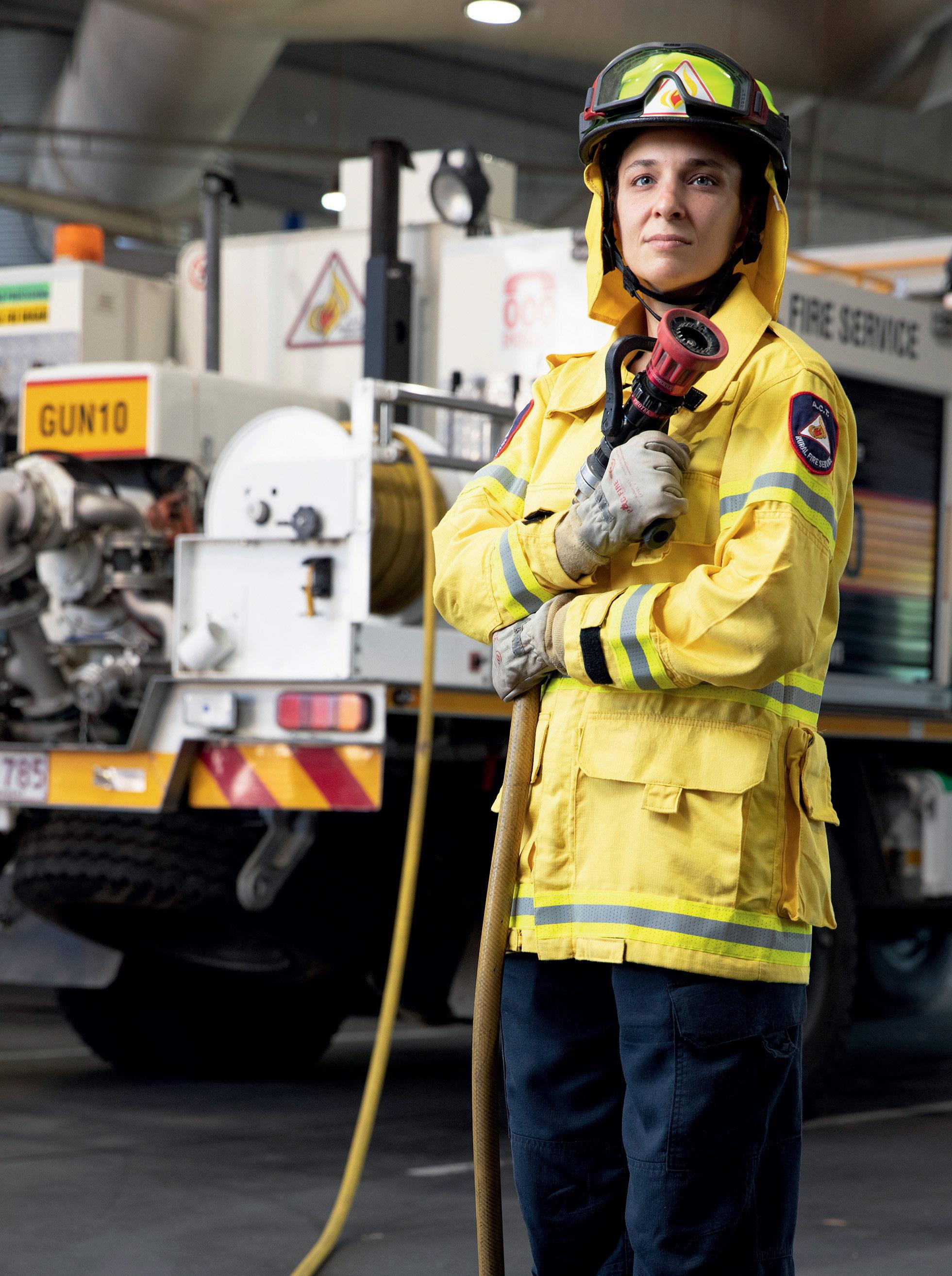
Now, as a deputy marine engineer officer, Loretta is in charge of making sure all the machines and equipment on a Navy ship are running smoothly. She also manages the fuel and water onboard.
Throughout her career, Loretta has used her STEM skills to solve problems and make important decisions. One of the most meaningful jobs she has undertaken was making sure a ship was fixed and ready to go back to sea.
Her volunteer firefighting work has also been incredibly meaningful, having responded to more than 600 incidents and even fighting the Black
Summer bushfires of 2019-2020. During that period, she served as a leader on multiple teams and, despite the difficult nature of the work, she says it was valuable being able to put her skills into practice and then take them back to her Navy role.
“Having a prior knowledge of fire behaviour, firefighting techniques and equipment has assisted in my role within the damage-control organisation on a Navy vessel,” she says.
Loretta says her experiences have taught her that she can do more than she ever thought possible and she is excited about promoting diversity in her organisations and mentoring both future female firefighters and Navy members to step outside their comfort zones: “The experience has taught me that I am very capable and have achieved things beyond what I thought was possible for myself.” –
by Gemma Chilton
When Lieutenant Loretta isn’t fighting for our country as a marine engineer, she’s volunteering to fight fires
I have achieved things beyond what I thought was possible for myself”
Asa marine technician submariner, Andrew is responsible for making sure the Australian Navy's submarines run smoothly, always keeping an eye on the systems and doing maintenance to ensure everything is safe and working properly.
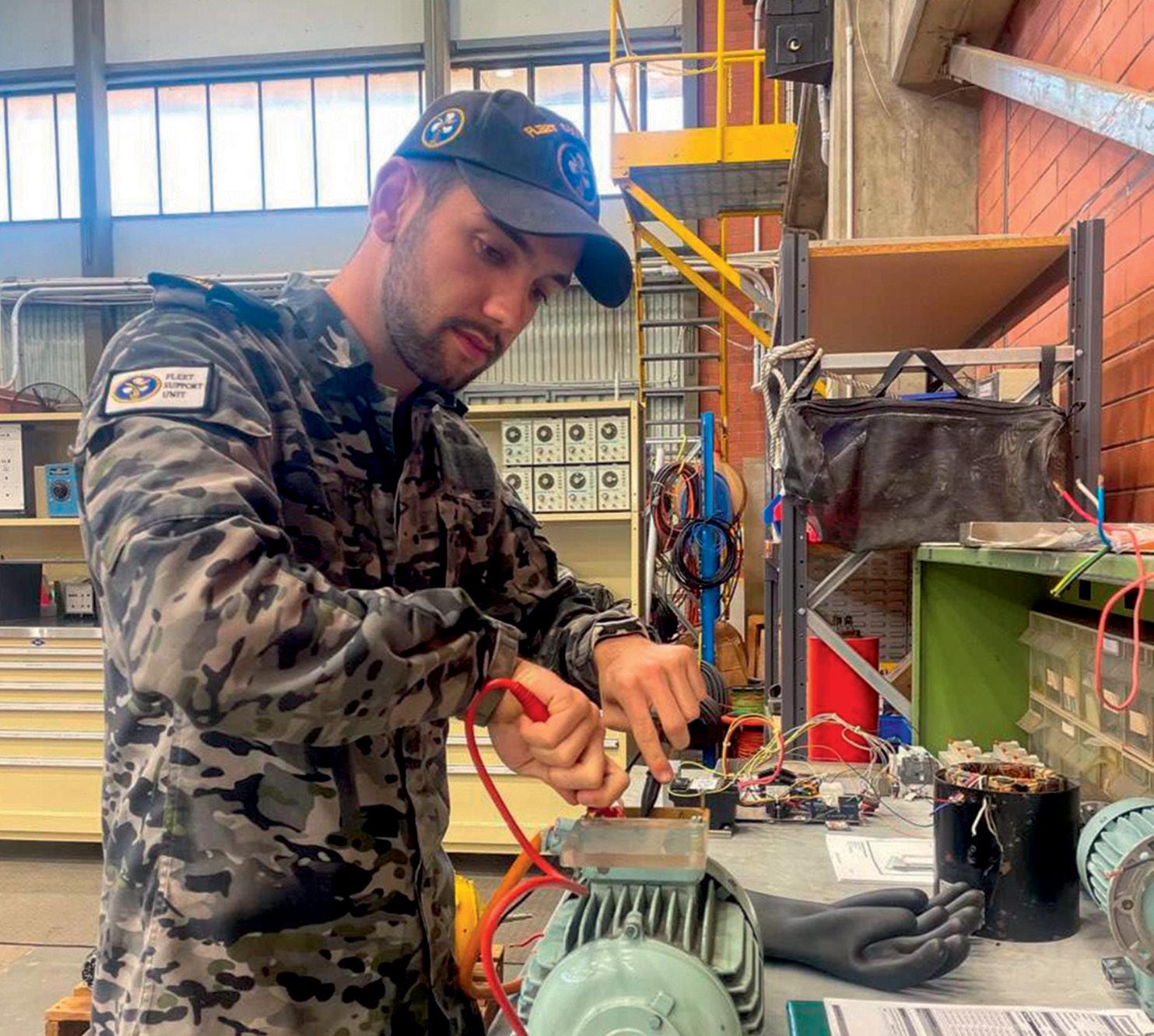
Andrew wasn’t sure what he wanted to do after high school, so he took a Navy Gap Year – a 12-month paid program that offers a taste of Navy life – and discovered the marine technician field, which he found interesting because it was hands-on and similar to an industrial electrician, a gig he was already interested in. Through the Navy, Andrew also got his electrical fitter’s licence, so he has something to fall back on.
One of the most exciting experiences Andrew has had was diving and surfacing a submarine.
“Being in control of the systems we use to dive the submarine and then making reports on the state of the systems to the captain is a pretty surreal feeling,” he says. “Everyone takes it very seriously and it’s like watching an action-packed movie, but you’re one of the main actors.”
Andrew thinks he’s hit the jackpot with his Navy career: “You get a very competitive salary while learning a trade, you get to work on a wide variety of equipment, you meet some awesome people and have amazing experiences that a lot of people could only dream of.”
– by Gemma ChiltonGrowing up on a remote island, Monifah didn’t have a STEM background and initially thought she wouldn’t enjoy using technology, but says, “After seeing what jobs I could get into at Defence, I thought it would be great to try a job that was out of my comfort zone”.
As a combat systems operator, Monifah uses sonar and radar to detect and track surface or subsurface vessels and ensure Navy command is aware of its surroundings: “It’s about knowing what’s going on at all times, as we are tracking and monitoring our whereabouts in the world.”
Monifah is also a recruit instructor for the Navy Indigenous Development Program and says bringing her cultural perspective to Defence is a key part of what makes Defence better.

“Every culture sees the workplace in a different view, so we will all have different levels of knowledge and perspective on things. When shared, the outcome will not only be fair but it will be the best outcome for everyone.” – by Heather
CatchpoleGap Year introduced Andrew to the job of marine technician – and he hasn’t looked backmarine technician, navy Certificate II in Engineering Certificate III in Electrical Fitting Marine Technician Submariner, Royal Australian Navy
every culture sees the workplace in a different view”
It’s like watching
action-packed movie, but you’re one of the main actors”

Defending our country used to be all about land, sea and air. But the digital age has changed all that. Now, threats can also find us online. In 2022, we saw some huge hacks targeting companies like Optus and Medibank – so Defence takes cyber security very seriously.
In 2017, Defence formed the Information Warfare Division (IWD) to combat digital threats to Australia’s interests. Information warfare – also called cyberspace or electronic warfare – is all about using computer networks to attack the other side. This can include the theft of sensitive
The ADF’s Cyber Gap Program gives uni and TAFE students the chance to work with mentors, learn new skills, complete challenges, attend the Defence Cyber Conference and more! You can be studying any cyber qualification from Cert III up, and the best bit is they’ll even pay your course fees for the year! More information at bit.ly/DefenceCyberGap
ASD CyberEXP is another cool resource. This interactive online experience puts you in the shoes of a cyber professional responding to a real-life scenario. It’s free and anyone can have a go! ASD also offers summer internships for uni students, as well as high school work experience placements, at the Australian Cyber Security Centre.
The world of cyber warfare is always changing. To help us keep up, researchers are busy working behind the scenes on the latest technology. For example, DSTG developed a technology called Shapes Vector that can analyse the security of large computer networks. The Australian Defence Force Academy (ADFA) also does important cyber research. It’s one of the two campuses of the UNSW Institute for Cyber Security (IFCYBER). If a research career is on your radar, it could be here!
Another way to have a career in cyber and Defence is through the Australian Public Service.

The Defence Graduate Program has different pathways all looking for cyber skills, including technical, intelligence and research and innovation pathways – so take your pick! There’s also the digital and intelligence streams of the Australian Government Graduate Program. This could get you in the door at one of the 10 departments and agencies that make up the National Intelligence Community.
information, blocking signals or taking control of infrastructure via a network. The IWD brings together the Australian Defence Force in a united effort to protect against these attacks.
Army signals officers, Navy information officers and Air Force cyberspace warfare officers lead technical teams and create plans for successful missions. Cyber analysts employ their digital forensics skills and knowledge to help detect, prevent and fight cyber attacks.
At the operational level, network technicians and systems operators keep everything running smoothly so that missions can be completed. It’s all part of a day’s work as a Defence service member! – by Chloe Walker
Where could you work?
Australian Signals Directorate (ASD)
Defence Science & Technology Group (DSTG)
Defence OrganisationIntelligence (DIO)
Australian GeospatialIntelligence Organisation (AGO)
Defence’s InformationChiefOfficer Group (CIOG)
Office of IntelligenceNational (ONI)
Catisha is using her transferable skills in maths and stats to help keep our Defence forces cyber-safe
Growing up, Catisha was fascinated by science and maths. She knew she wanted a career in STEM, so she studied biochemistry and statistics at university. But when she graduated, she wanted to try something new and “tackle real-life problems”. That’s when she found the DSTG graduate program and it was the perfect fit.
Now, as a communications science specialist at DSTG, she analyses computer network data to identify cyber security problems and help address them.
“I love my role because I have the opportunity to learn lots of new skills and tackle lots of different problems, and feel like I’m making a difference,” says Catisha.
One of her favourite projects so far has been working with machine learning – a field she’d never explored before joining DSTG: “It has been a lot of fun to learn and develop new skills in a research area that is developing so rapidly.”
Catisha’s advice for anyone interested in pursuing a Defence career?
“Always be willing to try something new! You never know what might become a new passion.”
She’s also a big fan of sticking with maths to broaden your STEM career horizons: “Learning as much mathematics as you can in both high school and university is a great way to keep your options open.” – by Gemma Chilton
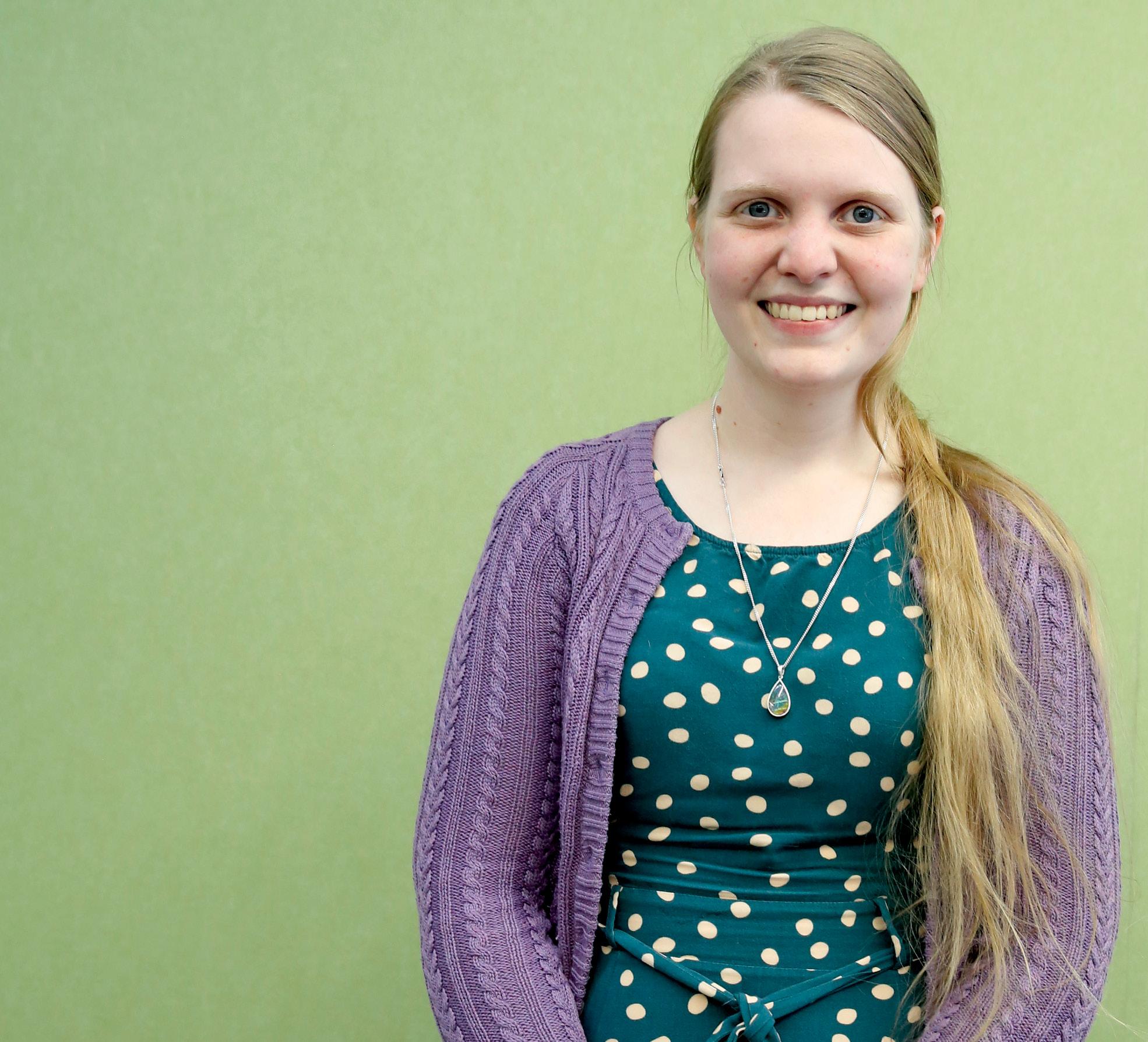
Bachelor of Science (Biochemistry and Statistics), University of Adelaide
Defence Graduate Program (Research and Innovation Pathway), DSTG
Master of Philosophy (Bioinformatics), University of Adelaide
Communications Science Specialist, DSTG
DEFENCE + CYBER SECURITY + STUDY
Bachelor of Computing & Cyber Security, UNSW (ADFA)
Bachelor of Computer Science (Cyber Security)
Bachelor of Science (Cyber Security)
Bachelor of Software Engineering (Cyber Security)
Certificate IV in Cyber Security
DEFENCE + CYBER SECURITY + JOBS
Navy Cyber Operator $79,452*
Navy Information Warfare Officer $80,857*
Air Force Cyberspace Warfare Analyst $79,555*

Air Force Network Technician $75,451*
Army Electronic Warfare Operator $79,452*
Army Cyber Analyst $79,452*
APS Cyber Security Researcher APS Level 3, $62,863–$69,265
ASD Cyber Security Analyst ASD Level 4, $71,919–$98,768
Source: defencejobs.gov.au/ jobs/, apsjobs.gov.au/s/
*Pay on completion of initial military training and initial employment training
catisha communications science specialist, dstgAlways be willing to try something new! You never know what might become a new passion”
Staying ahead of the technology game is critical for Defence and skills in tech like AI and robotics could give you the cutting edge
Forget teaching Fido to sit, stay and fetch – the Army has mind control for its robotic dogs
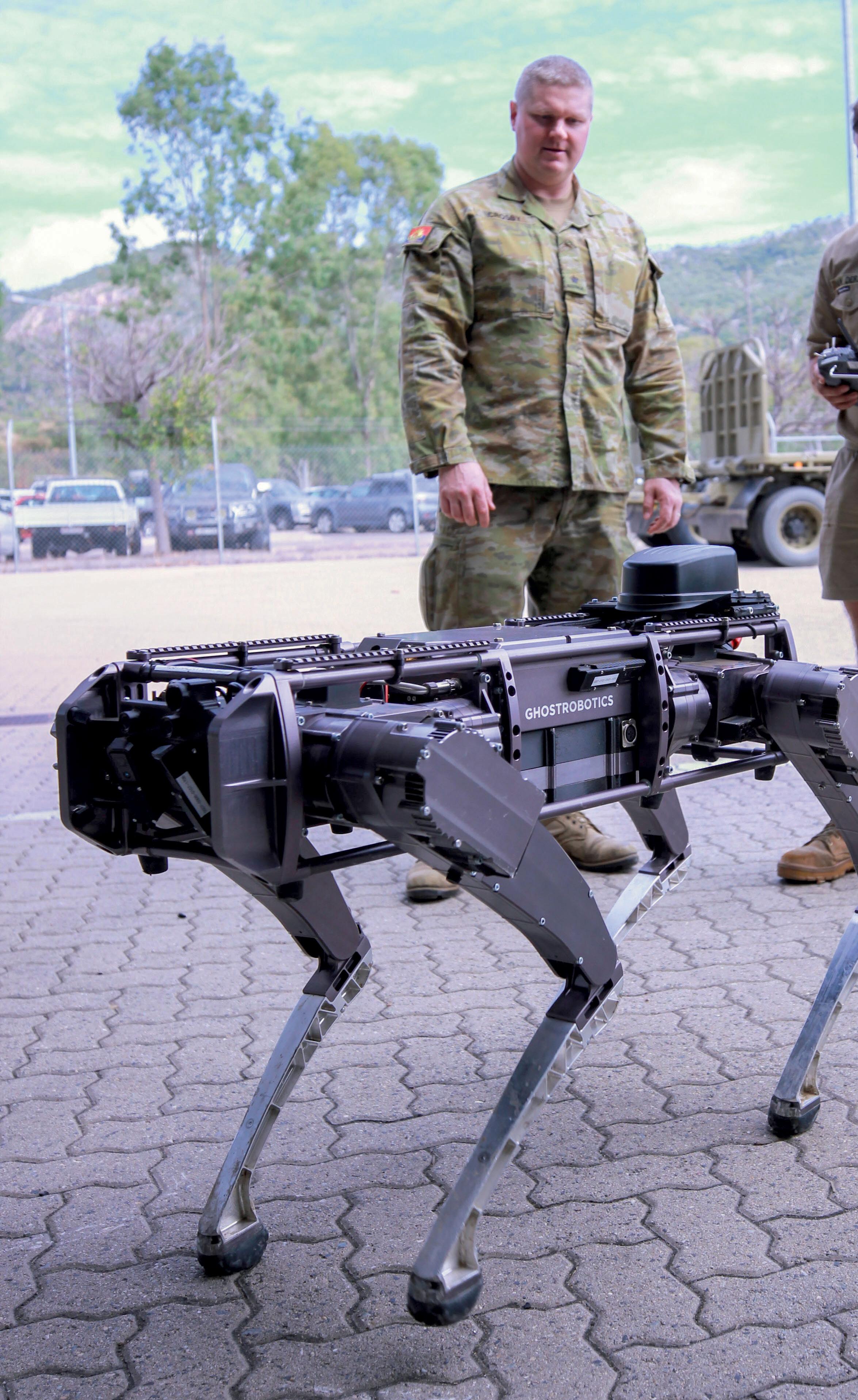
Two sergeants recently tested some tech developed by the University of Technology Sydney (UTS) that allowed them to operate a robot using augmented reality goggles and sensors that detected their brain waves. By concentrating on flickering shapes on the screen, they could tell the robot where to go.
Testing out cool tech like this is in a day’s work in Defence. And it’s a team effort, with researchers from Defence Science and Technology Group (DSTG), universities and even startups working closely with people from Navy, Army and Air Force to find ways to improve Defence’s capabilities.
The new wave Technology like artificial intelligence (AI), robotics, autonomous systems and machine learning could transform the way Defence operates. It’s all about making things faster, smarter and safer – as well as getting an edge over competitors.
The Navy recently tested 40 autonomous vehicles that can roam the ocean surface, under the sea or through the sky to help detect dangers or gather intelligence.

They’re also developing a robot submarine called Ghost Shark – best name ever! – that can lurk under the sea for long periods of time and travel long distances.
Meanwhile, Air Force analysts are using AI to sort through huge amounts of intelligence data and training it to detect and track targets of interest. They’re also investigating how AI can help people make smarter, faster decisions in risky situations. And the Australian government recently invested $10 million in developing AI tech for Defence, so there’s more to come!
With the right skills, a career in Defence could have you competing in a robot battle aboard a Navy ship, checking out the latest self-driving vehicles at the Army Robotic Expo or using a digital twin – a virtual model that accurately reflects a physical object – to test new systems in the Air Force.
Behind all the excitement of trialling new tech, there are heaps of dedicated researchers bringing it to life. DSTG is where Defence research happens, including cutting-edge
projects involving autonomous systems like air and sea drones, as well as AI and robotics. There’s also loads happening in unis around Australia, especially at ADFA, which is home to the UNSW Canberra Artificial Intelligence Hub, where more than 80 researchers tackle AI from every angle, from tech to ethics.
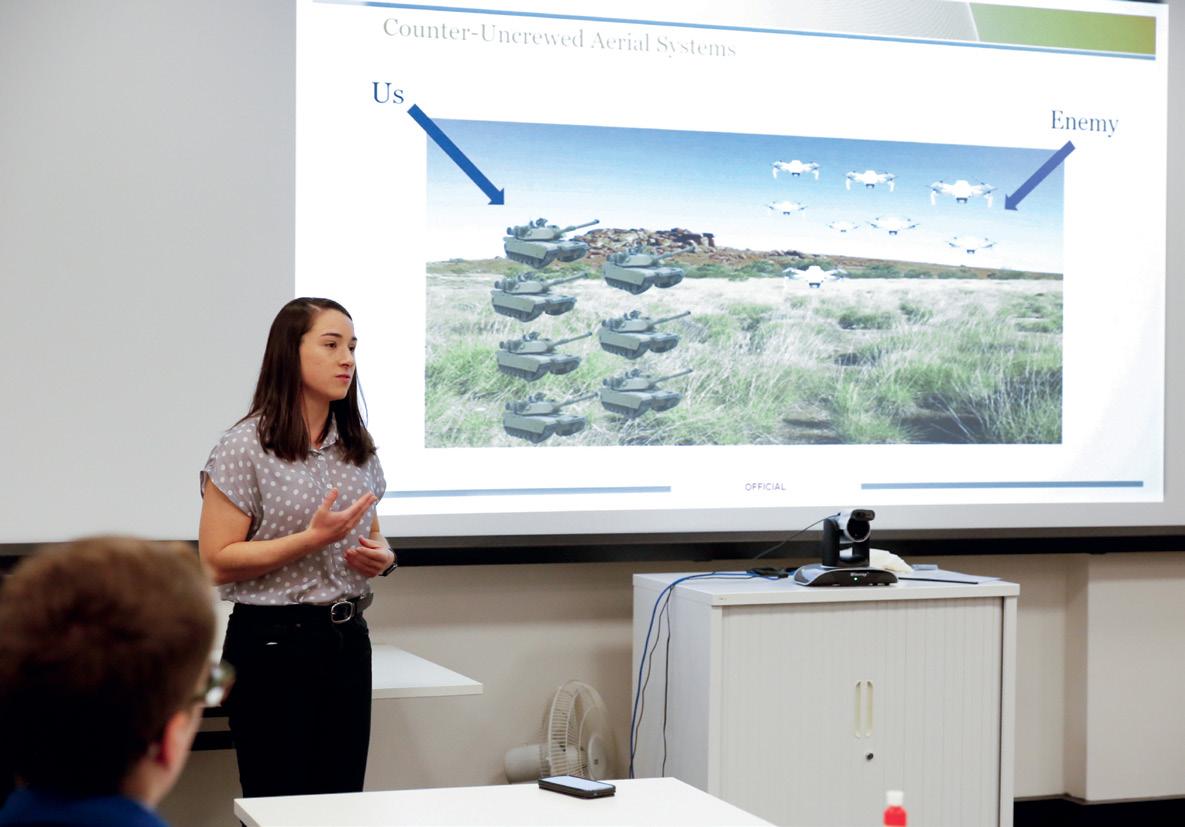
The Bachelor of Engineering (Mechanical) at UNSW (ADFA) offers streams in both AI and robotics and autonomous systems, so your tech passions are sorted whether you want to join active service or stay in civvies.
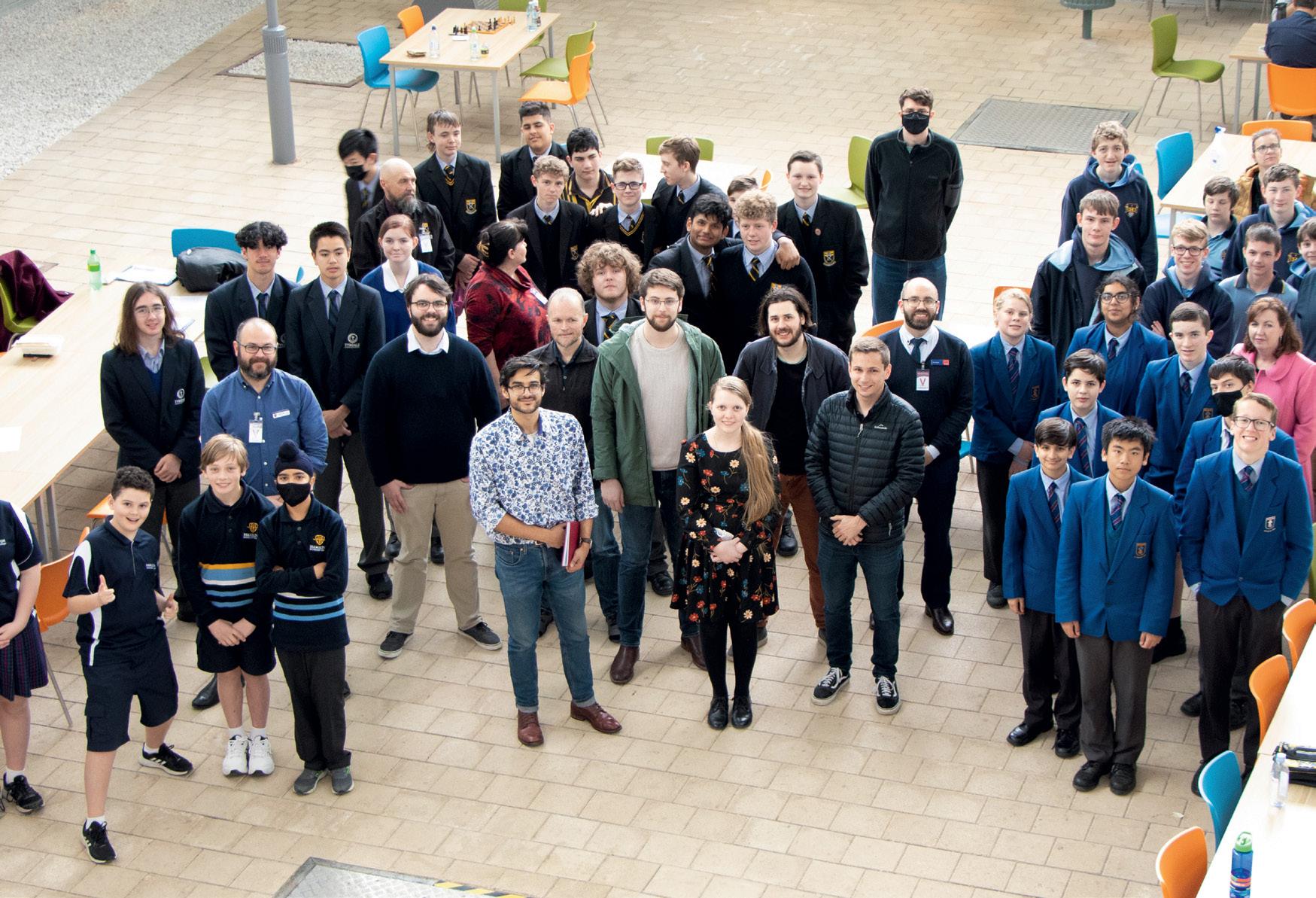

Be a digital defender!
Interested in cyber security? Check out DSTG’s Digital Defender program!

Every week, you’ll learn from a range of cyber specialists, with training covering everything from scripting to cryptography and digital forensics. At the end, everyone competes in a Capture the Flag challenge to see who is the ultimate cyber protector.
If you’re lucky, you might even go behind the scenes at a Defence research facility to check out some top-secret stuff. For more, email digital.defenders@defence.gov.au – no secret password required! – by Chloe Walker
START
YOUR
Bachelor of Science (Computer Science), UNSW (ADFA)
Bachelor of Computing & Cyber Security, UNSW (ADFA)
Bachelor of Engineering (Honours) (Mechanical), UNSW (ADFA)
Bachelor of Artificial Intelligence
Bachelor of Information Technology (Artificial Intelligence and Autonomous Systems)
Bachelor of Information Technology (Machine Learning)
Bachelor of Engineering (Mechatronics)
DEFENCE + ROBOTICS & AI + JOBS
Army Mechatronic and Electrical Engineer $90,629*
Air Force Electronics Engineer $87,989*
Navy Drone Mission Commander $91,260*
APS AI researcher APS Level 3, $62,863–$69,265
Computer programmer $69,991**
Mathematician $71,885**
Source: defencejobs.gov. au/jobs/, apsjobs.gov.au/s/, payscale.com.au
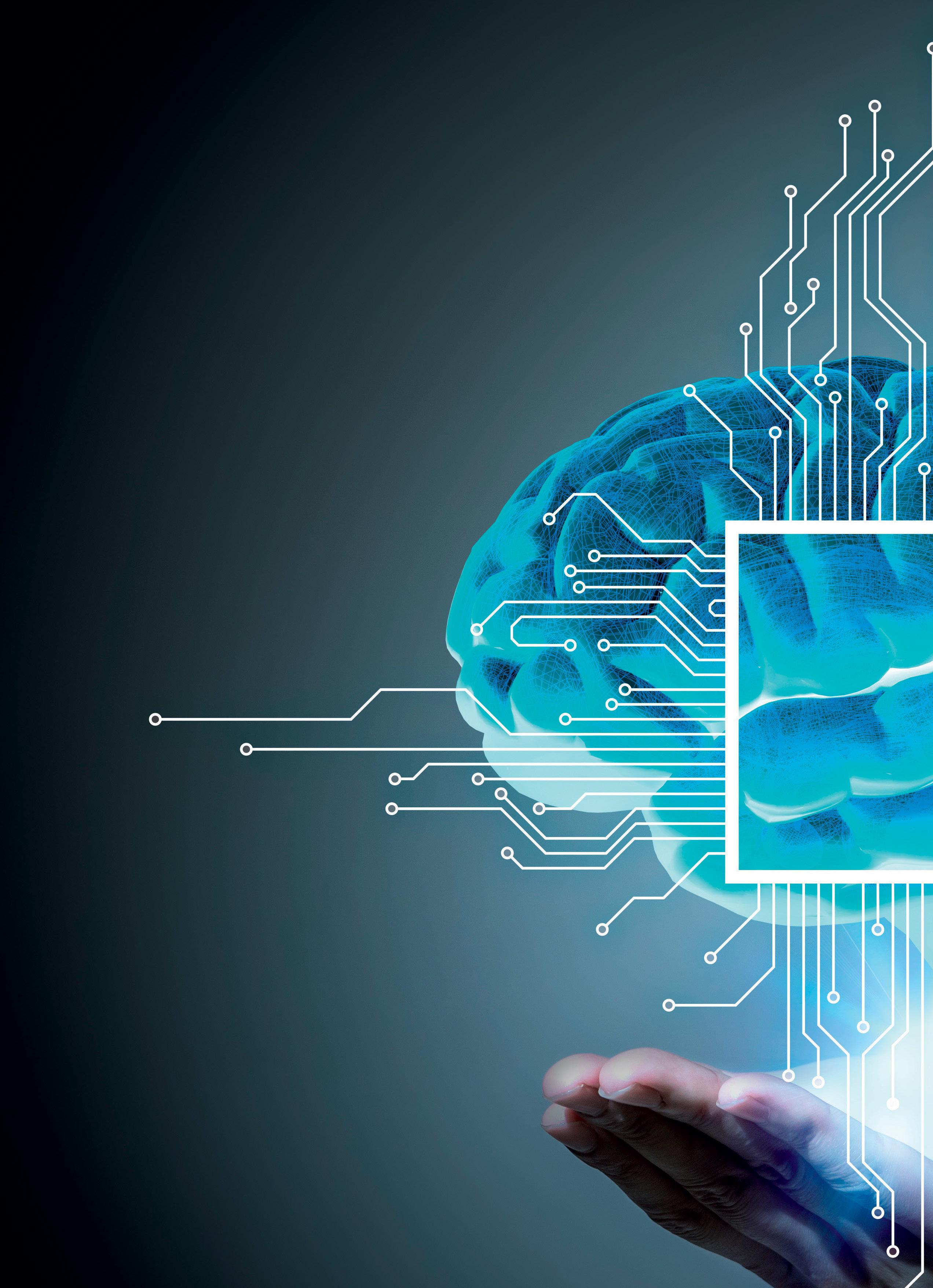
Almost every scientist on the planet needs to use computers, but not all scientists are computer experts. That’s where Kiowa comes in. As a digital science migration engineer at DSTG, she uses her AI and supercomputing skills to help scientists solve problems.
“I love this job because I get to work with scientists from every background, which means I’m always learning something new!” she says. Although tech might be her 9-5 these days, Kiowa wasn’t always sure she’d work in STEM.
“I love making art, writing poetry and I also loved studying philosophy at university,” she says. “When I realised that being creative and communicative was a really important part of STEM, I felt like it was the right place for me.” She studied maths at uni and says this made it easier for her to understand computers and scientific problems. And as for working in Defence? She chose it so she could learn from
the many clever people who work there: “There is a lot of support to grow and learn in Defence, whether that’s trying out a new job, going back to university or just having a chat with someone interesting.”
Kiowa says she’s only ever met one other Aboriginal woman working in tech – and changing that situation is important to all her Defence co-workers.
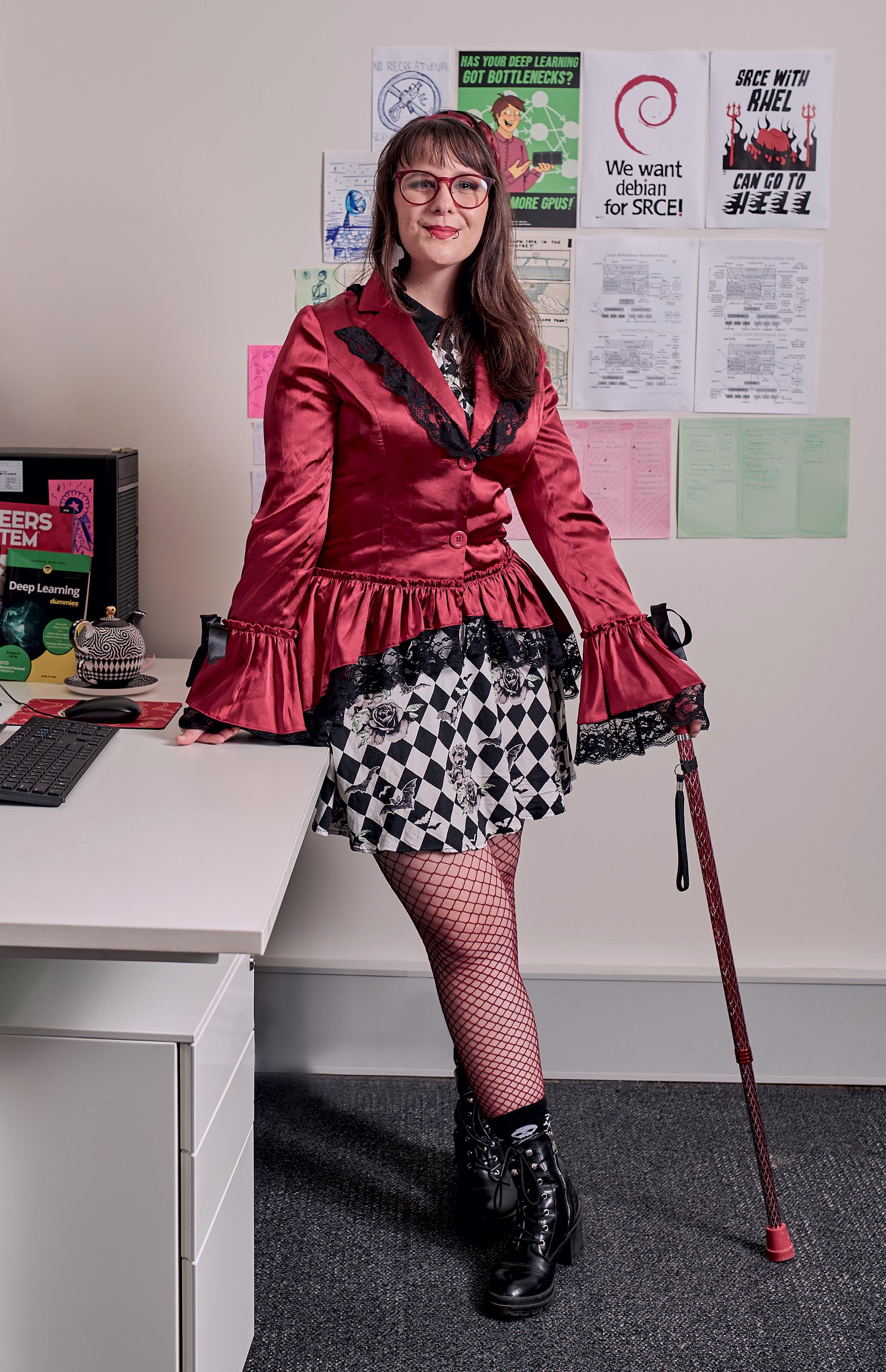
“Being diverse means I’m extra-interested in listening closely to different perspectives and ensuring everyone is included, which means we can learn more from the people we work with and create solutions which work for as many different people as possible,” she says.
Kiowa believes there’s a job for everyone in Defence and recommends soaking up as much knowledge as possible: “Don’t be afraid to attend a career day and ask lots of questions about the careers that might interest you.”
– by Louise Meers TINA SMIGIELSKIthere is a lot of support to grow and learn in defence”kiowa digital science migration engineer (AI), dstg Kiowa is a proud Dja dja Wurrung woman using her tech expertise to help Defence scientists Bachelor of Arts/Science Scientific Computing Cadet, CSIRO High Performance Computing Consultant, Monash University Digital Science Migration Engineer (AI), DSTG Masters in Cyber security as a recipient of an ATSE ELEVATE leadership scholarship
Peter knew he wanted a career that involved creativity and problem solving – and he found it in a cool robotics gig
Asa kid, Peter was interested in problem-solving, whether it was in games or his studies. He realised working in STEM was perfect for him as it’s “filled with problems waiting to be solved with logic and creativity”. He went on to do a double degree in electronic engineering and computer science, which landed him a job at DSTG, where he now “writes code to make robots work and extract information from them”.
Specifically, Peter builds prototype robots and programs to detect faults and damage in all kinds of materials. One of the things he loves most about his job is that he learns something new on every project.

“I get to know ‘just enough to be dangerous'!” he jokes.
Peter chose Defence because he wanted to work on projects that help other people. He says he’s super grateful for the support of his team, who have helped him feel welcome and that his ideas are always heard.
One of Peter’s favourite projects has been working on something called ‘line scan thermography robots’.
“We built a ground robot from scratch, programmed it to drive in a straight line... We also programmed it to drive in anything but a straight line, just to see what would happen,” he says, adding that it won the team the Best Paper award at a conference.

Peter’s top career tip? “Never give up, keep learning and enjoy the journey.” –
by Gemma ChiltonKatie’s love of STEM started in high school and she signed up for a double degree in aerospace engineering and maths and data, with plans to become an aerospace engineer. But while she was at uni she found her true passion lay in maths and data, where she felt she could better use her creativity and skills.
Then, before she graduated, Katie became part of the first intake of DSTG’s STEM Cadetship Program.
“This gave me insight into how the skills I was learning could be utilised to inform real-world problems while I was still at university, and gave me the peace of mind of a job at the end of my degree,” she says.
Katie now works at DSTG as a data scientist, helping build tools that use data science, visualisation, simulation and machine learning to predict the future of the Defence workforce: “I use modelling and simulation to inform long-term, high-impact decisions,” she says. “A key part of my work on this project is in visualisation
and natural language generation, where I translate complex mathematical models and simulations into clear, understandable recommendations using state-of-the-art machine learning and data science techniques.”
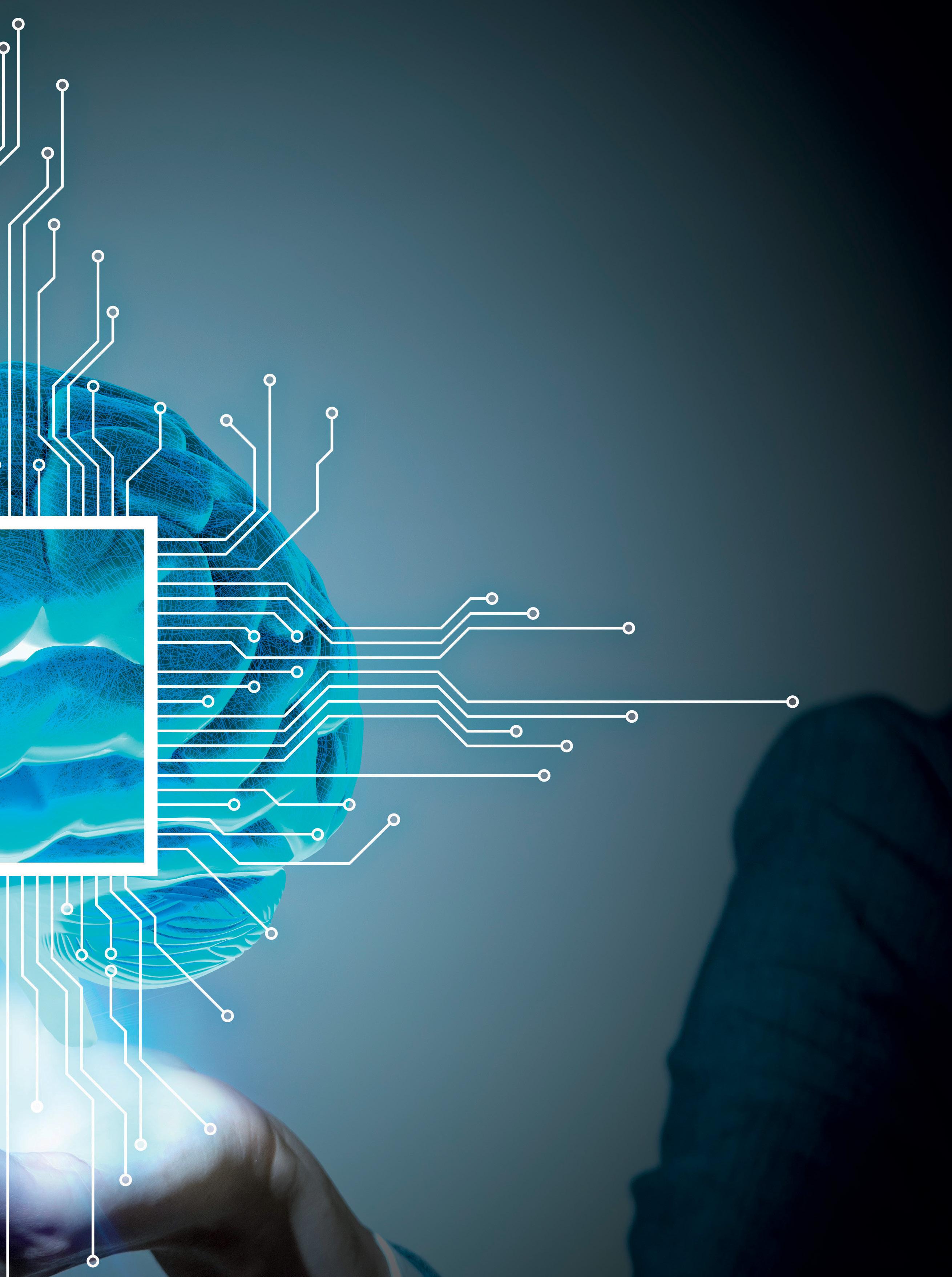
Katie has struggled at times with confidence, but credits the supportive environment at DSTG with helping her work through this. She also recently took advantage of DSTG’s Science and Technology Education Initiative to begin her Masters.

Her advice for anyone considering a STEM career?
“Just because you struggle with one subject or area doesn’t mean STEM is not for you,” she says. “There is always help in the form of work colleagues, friends and mentors.” – by Gemma
ChiltonNever give up, keep learning and enjoy the journey”
peter systemsspecialist,integration dstgkatie data scientist, dstg
The Engineering is Elementary program uses hands-on activities to build primary school teachers’ skills and knowledge to bring their STEM teaching to life. These free workshops are delivered by Questacon, The National Science and Technology Centre, and supported by Defence until 2027. Through these workshops, educators are empowered to enable their students to learn engineering through fun activities, such as learning chemical engineering by playing with playdough or sustainable engineering by building a solar oven.
Each workshop focuses on an engineering challenge. Defence engineers help to bring these challenges to life by participating in the workshops and sharing their real world experience.
A senior teacher of inclusive education at Centralian Middle School in the Northern Territory, Michelle Pinto did a workshop focused on bridge building. They became so engrossed trying to cantilever five Jenga blocks off the edge of a desk that the organisers had to take the Jenga away!


“Simple things like that are really effective in my classroom setting and give me really practical activities for important concepts,” she says.
Michelle teaches Year 5 and 6 maths online for the School of the Air in Alice Springs, which educates students living remotely. She has several international students, too. Her students who didn’t come to the in-school session built their bridges with whatever they had at home, like old tyres and other things they might find lying around a farm or station.
“The student from Fiji, who took part online, made his bridge out of seashells and fish bones, coconut and pandanus leaves,”
she says. “Those were the resources he had available to him, which is reflective of engineering in communities.”
That’s just the kind of imaginative approach Questacon is hoping to spark. Broderick Matthews, Questacon Senior Manager Education Programs, says the program helps students and educators build skills like creativity, critical thinking, collaboration and problem solving, which are critical to solving the challenges of our future.
“Australian Defence Force members are an important part of delivering Engineering is Elementary,” says Major General Wade Stothart, Head of the People Capability Division at Defence.
“Engineering is Elementary workshops equip primary school educators with the skills, confidence and resources to integrate STEM concepts into their classrooms. The early introduction of STEM concepts teaches students to be problem solvers, critical thinkers, collaborators, and communicators, and better equips them to pursue STEM-related careers in the future.
“By doing so, they provide real, personal, and practical examples of the diversity of STEM careers in the Australian Defence Force. Over the length of this partnership period, Engineering is Elementary will reach over 2500 educators across Australia, and will enable effective STEM practice to reach

diverse and under-represented audiences across schools in low socioeconomic areas, regional and remote communities, women and First Nations Australians.”

Helen Foy is assistant principal at Binya Public School, NSW, which has just 19 students. She has participated in several Engineering is Elementary workshops online and says the magic works for kids right through from kindergarten to Year 6.
“The chatter and engagement increases as the students are succeeding or failing, as they are discussing the problems of why something isn’t working or which ideas they will use to tackle the problem,” she says.
“I want them to be intrigued and wonder about how things work. The activities created
by Engineering is Elementary workshops help me do this.”
Michelle agrees that teaching kids about design processes was a huge deal.
She talked to students about theory and the strength of different structures, like cylinders and prisms, which they built from paper and tested with tubs of rice. Then they had to research, design an idea, test it, improve it and repeat. Just like real engineers!
Exposure to engineering before high school helps students understand the huge role STEM careers can play in Defence. Helen says the workshops have inspired her students about the future.
“I have students who say engineering is something they want to study. I have students who will be farmers and engineering will be part of their everyday lives,” she says.
“Even if students don’t specifically become an engineer, the skills learnt following the design process of improving the world around them will help them in all careers.”
Michelle’s students are already making an impact – their bridges had to be usable, not just prototypes. One of them could hold the weight of three adults.

“This just took my teaching to a different level and gave me some really solid resources,” she says, adding that primary teachers don’t often get to do such thorough and fun homework before they go into the classroom.
Both teachers have also started seeing their world through an engineering lens. Michelle says she gained a new understanding of the tricky project to build a roundabout in Alice Springs. Helen now appreciates that engineering is about processes and problem-solving, not just products.
Major General Stothart says the partnership between Questacon and Defence will also support the delivery of the Questacon STEM Futures program and the development of an Applied STEM program. These programs work together to empower primary and secondary educators to establish structures for STEM programs, develop their own STEM resources and embed STEM culture in schools.
“I am excited by the opportunities that this partnership with Questacon presents and am very pleased that it will allow Defence to showcase the diversity of STEM roles, while equipping teachers to teach STEM concepts to the young Australians who will be the future STEM leaders of the nation and the Australian Defence Force,” he says. – by Alison Ratcliffe
ENGINEERING IS ELEMENTARY WORKSHOPS ARE ALSO DELIVERED VIRTUALLY, SO GEOGRAPHY IS NO OBSTACLE TO GETTING TOOLED UP IN STEM.option 2
Take a gap year with the ADF
Finished Year 12 and ready to try something new? The Navy, Army and Air Force offer a paid gap year where you can choose the Defence role you want to try on for size.
STEM subjects are a bonus if you’re looking to try on an officer’s hat. Added perks are travel, training and work experience. More info here: bit.ly/ADFGapYear
Snap up an apprenticeship
If you’ve completed Year 12, here are a few ways to get a degree while working towards a career in Defence:
• Australian Defence Force Academy (ADFA): Dive into STEM degree studies at UNSW while training to be an officer in the Navy, Army or Air Force.
• Navy, Army and Air Force: Defence apprenticeships range from mechanics and electronics to carpentry, aviation and telecommunications: bit.ly/ADFTrades

• Defence University Sponsorship: Score a salary and leadership training while you finish your engineering, science or healthcare degree (or a bunch of others!). You could have a job waiting for you when you graduate!
• Join the military: You can join after you complete your degree, be sponsored at a civilian university or attend ADFA. Or you can join through general entry to gain a technical trade.
More info on joining the ADF: bit.ly/DefEntry
Find out more about STEM careers in Defence Science and Technology Group (DSTG): dst.defence.gov.au/careers/stem-careers
• Cyber specialists: The Australian government’s Digital Apprenticeship Program can lead to a Defence cyber role. bit.ly/ASDCyberApprenticeProg
Explore a huge range of STEM apprenticeship options at DSTG: bit.ly/DSTGSTEMapp
Defence recruits grads from a multitude of degree areas, including but not limited to engineering, healthcare and science for a range of challenging and exciting roles
option 1
• If you’re interested in cutting-edge research, check out DSTG’s Defence Graduate Program (bit.ly/DefSciTechGrad) or STEM
Cadetship Program: bit.ly/3mdPoS9
Defence’s Graduate Program also has technical and intelligence pathways that could open doors to engineering, project or cyber roles: bit.ly/DefCareersGrads
option 2
Want to combine your passion for code and computers with keeping the country safe? Check out these opportunities at the Australian Signals Directorate (ASD):
• Spend a week honing your hacker-blocking skills in a work experience placement at the Australian Cyber Security Centre (ASCS).
• ASD CyberEXP is an interactive online program that gives uni and high school students a taste of life on the frontline of Defence cyber security.
• The ASD Internship Program is a paid opportunity for uni students to dive into Defence cyber operations during their summer holidays.
• The Australian STEM Cadetship Program offers part-time work for uni students in a range of STEM courses, and there’s a stream for Defence cyber. More info here: bit.ly/DEFENCEStudentOps

As a Battlespace Communications Specialist in the Army Reserve, Kelvin provides the communications link between command operations and soldiers on the ground

Asa reservist, Kelvin works part-time and has a separate full-time job as a policy officer in the Australian Public Service: “I appreciate being able to break up everyday life with a weekend out field on an Army exercise, or going on a two-week training course. The Army Reserve gives great flexibility and there’s no obligation to show up when you are unavailable due to your full-time work being busy, university exams or family commitments.”
“Since joining, I’ve been so greatly supported by the corporals and sergeants in my unit, the 143 Signal Squadron. They’ve taught me so much and are always looking for opportunities to do something engaging."
Kelvin was interested in STEM from a young age. “Knowing how things work was always going to be fascinating to me. Working in the Signals team has been a great opportunity to learn about and experiment with the electromagnetic spectrum. Some high school physics knowledge comes in very handy!”

Follow @defencejobsaust to keep up to date with career news and stories for Navy, Army and Air Force. Or if you’re more into research, @defencescience is the feed to tap into.
Defence Jobs Australia has video interviews with technicians and officers, virtual tours of the Australian Defence Force Academy, and more.
Follow @ASDGovAu for news on Defence cyber info sessions and opportunities.
SUPPORTED BY
Careers with STEM:Defence is a publication and trademark of Refraction Media. Copyright © 2023 Refraction Media, all rights reserved. Photo credits are Defence unless noted otherwise. Roles and remuneration averages vary depending on qualifications and being a trained, uniformed member of Defence or a civilian employee. No part of this publication may be reproduced in any manner or form without written permission. If you would like to reproduce anything from this magazine, email: info@refractionmedia.com.au.
We acknowledge the Traditional Owners of country throughout Australia and recognise their continuing connection to land, waters and culture. We pay our respects to their Elders past, present and emerging. This issue went to press on 23 May 2023. Printed in Australia by IVE.
Cover image: Tina Smigielski
Produced and published by: Refraction Media
Co-founder, CEO & Publisher: Karen Taylor-Brown
Co-founder, CEO & Head of Content: Heather Catchpole
Managing Editor: Charis Palmer
Art Director: Katherine Power
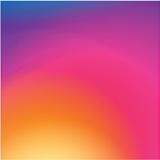
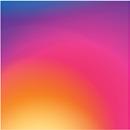
Digital Editor: Cassie Steel
Digital Content Strategist: Louise Meers
Subeditor: Karl Mayerhofer
Writers: Heather Catchpole, Gemma Chilton, Nadine Cranenburgh, Danielle Lucas, Louise Meers, Alison Ratcliffe, Cassie Steel, Chloe Walker
SUBSCRIBE AND ORDER COPIES: CareerswithSTEM.com /subscribe
EDITORIAL & ADVERTISING ENQUIRIES: Email: info@refractionmedia.com.au or +612 9188 5459
POSTAL ADDRESS: PO Box 154, Oyster Bay NSW 2225 Sydney, Australia CareerswithSTEM.com
ISSN 2209-1076
